






Welcome to the 2024 Spring Edition of Better Horses!
Special thanks for all those who subscribe to the Better Horses Newspaper. To have this paper delivered directly to your home see page 3 for details or go to www.betterhorses.com/media/#newspaper
The excitement of horse shows, rodeos, and trail ride events is in full swing. Better Horses is proud to provide education and understanding in the training of these magnificent animals.
In this issue the Pinto Horse Association of America, Inc. (PtHA) is presenting the 2024 Pinto World Championship Show held in Tulsa, Oklahoma, at the Tulsa Fairgrounds, beginning June 8th through June 22nd. This is the largest all breed horse show in the country with over 700 classes to compete at all levels. You can find all the classes in this edition.
As always “Kudos” to all the talented Trainers, Clinicians, Veterinarians and Nutritionists contributing to Better Horses. The Better Horses Radio, Television, Podcast and Newspaper continue to provide valuable program content, while satisfying much needed training tips and knowledge to strengthen the horses and our ability to care for them.
Our radio and television stations continue to grow in rural markets across the country.
The “Run For A Million” will be hosted by the prestigious South Point Arena and Equestrian Center in Las Vegas, Nevada from August 12 - 17, 2024. The richest event in the history of reining and the most exciting and thrilling new event in cow horse and cutting.
Be sure to mark your calendars for “The Missouri State Fair” from August 8– 18 2024. The state fair which has operated since 1901 in Sedalia, Missouri, includes daily concerts, exhibits and competitions of animals, homemade crafts, shows, and many food and lemonade stands. There is truly something for everyone to enjoy at the State Fair.
And finally, we are very thankful for the Better Horses team. A special “Shout Out” to Breanna Johnson – Radio Producer, Kelly Creech – Television producer, Faye Smith – Branding Coordinator and Graphic Artist, our talented Suzie Arbo – Co-host Television, Professional Horse trainer Matt Jobe – Media Talent & AE, Merle Arbo – Co-host Radio.
As always ride safe and see you on the trails.
ED ADAMS, CEO BETTER HORSES

5. Get Ready for Two Weeks of Equine Excellence at the 2024 Pinto World Championship
6. Poor Performance in Horses
10. Putting Weight on a Skinny Horse
16. Upcoming Local Rodeos
17. The Essential Guide to Choosing the Right Tack for Your Horse
18. Managing Metabolic Syndrome
20. Horse’s Ability to Move Both Directions Fluently Depends on Training
22. Fergus
24. Spookiness
26. Horses Are Not Pets
27. Hotblood, Warmblood, Coldblood Horses
28. Help for the Timid Rider
31. Positive vs. Negative Reinforcements for Horses
32. Liniments and Poultices for Horses
34. Knowing How to Bit Fit Your Horse
36. Pinto World Championship Schedule
43. Right Plant; Right Place
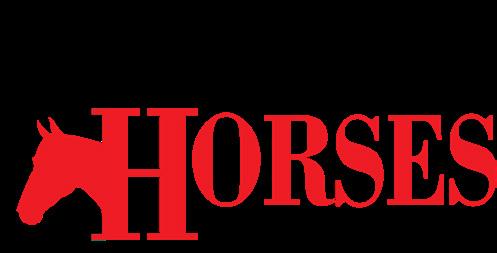

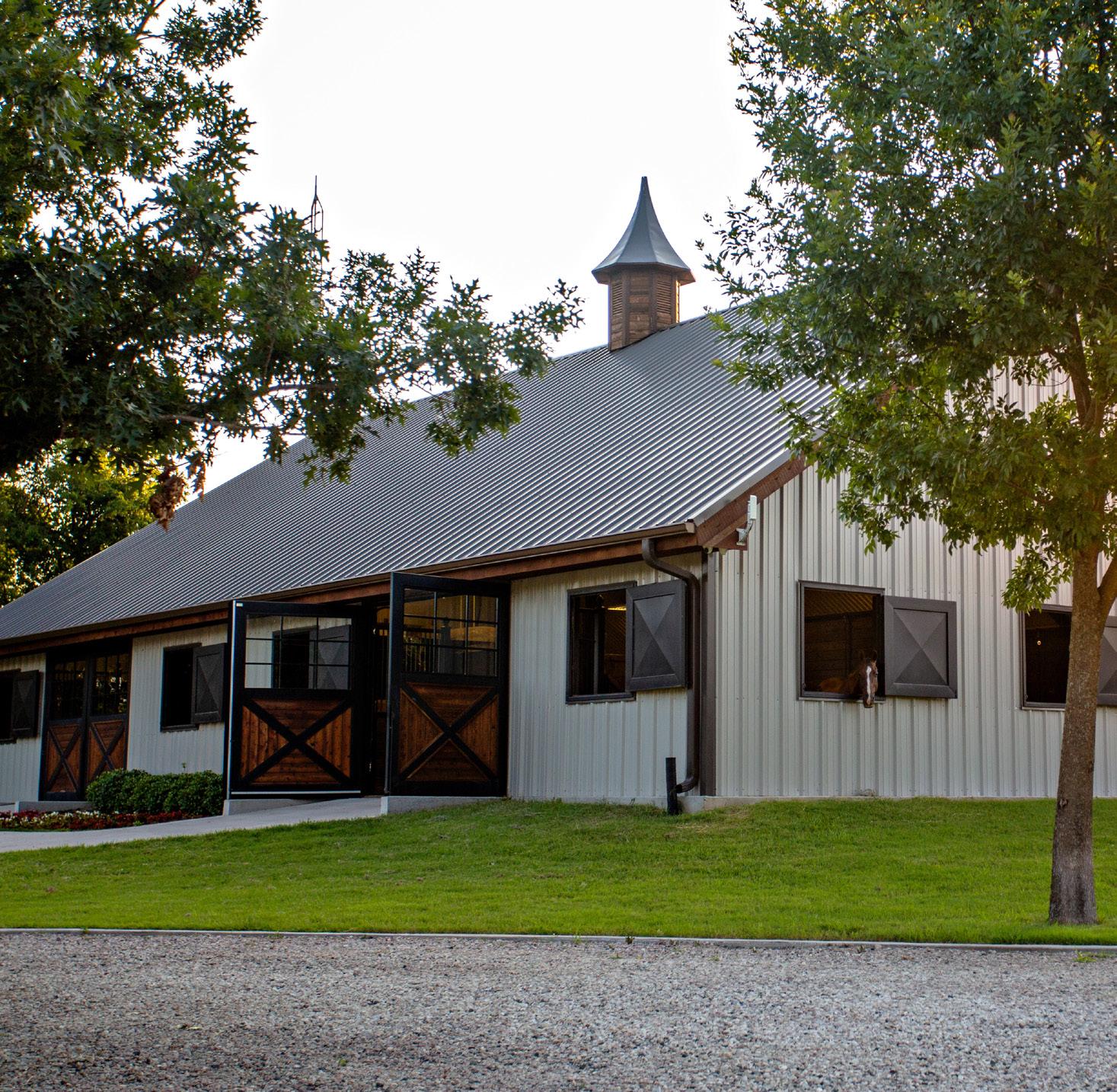
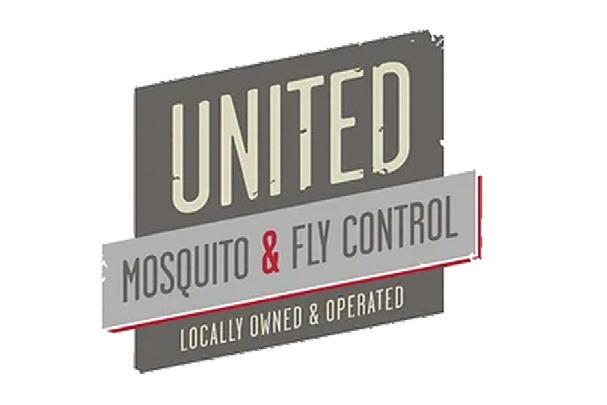


Visit the 2024 Pinto World Championship in Tulsa, Oklahoma
Horse enthusiasts, mark your calendars! The 2024 Pinto World Championship is gearing up to take Tulsa, Oklahoma, by storm from June 8th to June 22nd at the Tulsa Fairgrounds. This two-week extravaganza promises an unparalleled showcase of equestrian talent, camaraderie, and excitement.
Started in 1965, The Pinto World Championship Horse Show is one of the most prestigious and largest events in the horse show industry. Prizes including buckles, ribbons, chairs, rose garlands, and even saddles are awarded to the World Champions, Reserve World Champions, or high point winners. Held annually in Tulsa, Oklahoma, this show brings together some of the best Pinto horses from around the world to compete in a variety of classes. It’s a great opportunity to see a wide variety of breeds and colors all in one place.
The Pinto World Championship Horse Show is open to all registered Pinto horses, which are known for their distinctive spotted markings. However, not all Pintos have spots, and there are opportunities for Solid Bred Pinto horses to compete. This breed is not limited to any specific discipline, so the event includes classes for Western, English, driving, halter, and many other types of competitions. The classes cater to all types of equines such as Stock
Type, Hunter Type, Pleasure Type, Saddle Type, Miniatures, and Ponies.
The show lasts for about two weeks, and features a variety of events, including youth and amateur classes, open classes, and championship classes. The competition is fierce, with many riders and horses traveling from all corners of the globe to participate. It’s a great family-friendly environment for both exhibitors and spectators.

The Pinto World Championship Horse Show is also known for its extensive vendor area, which includes everything from horse equipment and supplies to clothing and accessories. Here, attendees can peruse the bustling trade show, where vendors offer an array of equine-related goods. Educational ride the pattern clinics give attendees the chance to learn from some of the top professionals in the industry.
Back again this year is the Youth Speech Contest and Youth Judging Contest on June 8th and 9th. These events provide a platform for young equestrians to showcase their skills and knowledge.
For those who can’t make it to the show in person, there is a live stream available, so you can still watch the competitions and cheer on your favorite horses and riders from the comfort of your own home.
The Pinto World Championship Horse Show is a thrilling event that showcases the beauty, athleticism, and diversity of the Pinto breed and the horse world at large. Whether you’re a rider, breeder, or just a fan of horses, this event is definitely worth checking out. Mark your calendars and get ready to experience the excitement of the Pinto World Championship Horse Show!
For more information and entry details, visit the official website of the Pinto Horse Association at www. pinto.org. Be sure to check out the full schedule of events located toward the back of this publication.


What could be causing this, and how can my veterinarian help?
WRITTEN BY KATHERINE DELPH MILLER, DVM, MS, DACVIM, KANSAS STATE UNIVERSITYAs all of us horse-loving people know, horses are incredible athletes and they typically aim to please. So when your horse isn’t performing well or has a behavior change under saddle, we want to look for an underlying cause of that change. Poor performance could mean that your horse isn’t performing at the level they used to, is reluctance to work, has a change in behavior, or isn’t meeting expectations.
Lameness immediately comes to mind when your horse isn’t performing well, and it should, because lameness is the most common cause of poor performance in horses. A lameness examination is a great place for your
Disease
Equine Asthma
Exercise-induced pulmonary hemorrhage (EIPH) (Bleeder)
Upper airway obstructive disease
veterinarian to start with a poor performance work-up and should include watching the horse walk and trot in a straight line on various terrain, if possible, lunge at all gaits with and without tack, and be ridden at all gaits. This will help determine if there is a lameness of one or more limbs and also help determine if the horse is showing signs of pain from somewhere else in the body.
But lameness isn’t the only source of poor performance, so your veterinarian will want to obtain a thorough history of what problems have been occurring as well as performing a detailed and thorough physical examination on your horse before you start jogging him around the arena. Other sources of poor performance include the respiratory system, cardiovascular system, muscular system, neurological system, or even the gastrointestinal tract.
What is it and what signs does it cause?
Chronic respiratory disorder due to reaction in the lungs from inhaled allergens, dusts, and molds
Subtle signs: not recovering well from exercise, coughing and/or breathing harder than normal during exercise
More severe signs: increased respiratory rate and effort at rest, nostril flare, and coughing at rest (heaves)
Bleeding from the lungs during intense speed and high-level exercise
• Thoroughbred racehorses
• Barrel racing horses
• Eventing horses during cross-country phase
• Endurance horses
• Epistaxis (bleeding from the nose) does not occur commonly
Poor performance, coughing or frequent swallowing during exercise
Abnormalities of the upper respiratory tract that are static (present at all times) or may be dynamic (present during exercise only or during specific head and neck positions)
Noise during exercise, exercise intolerance, coughing during exercise, frequent swallowing during exercise, and abnormal breathing patterns during exercise
An abnormal heart rhythm (arrhythmia) and/or heart murmur may be heard when auscultating the heart. If an abnormality of the heart is detected on physical exam and your horse isn’t performing well, your veterinarian will want to perform an ECG (rest and possibly exercising), blood work, and echocardiogram (ultrasound of the heart).
How do you diagnose it?
Endoscopy of the airway including trachea (windpipe)
Imaging (ultrasound or possible radiographs/x-rays of the lungs
Bronchoalveolar lavage (BAL): to evaluate for abnormal amounts and types of white blood cells present
Endoscopy of the airway including trachea within 1-2 hours after exercise
BAL: to look for red blood cells or other evidence of bleeding in the lungs previously
Endoscopy of the airway including trachea within 1-2 hours after exercise
BAL: to look for red blood cells or other evidence of bleeding in the lungs previously
Standing, unsedated endoscopy of the upper airway
Dynamic endoscopy while the horse is being ridden or exercised (Figure 1 and 2)
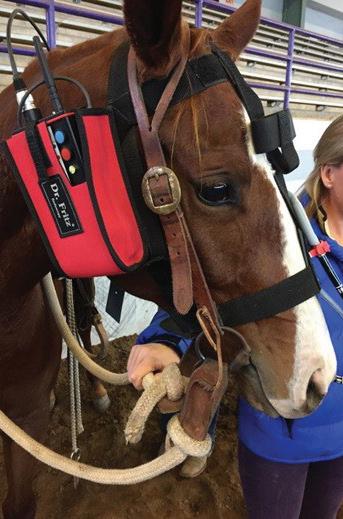
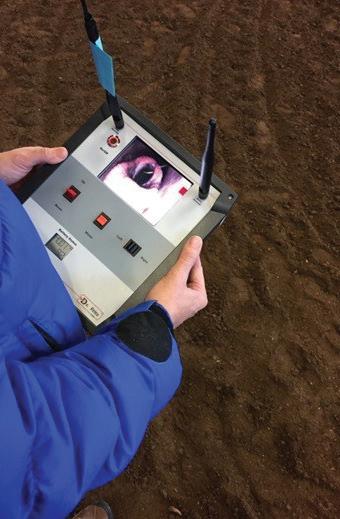

There are a variety of muscle disorders that are genetic or inherited in specific breeds of horses (Table 2). Clinical signs of muscle disease can include pain usually with exercise, muscle weakness, muscle atrophy, reluctance to move forward, mild to severe stiffness, stilted gait, sweating, colic-like signs or posturing to urinate frequently, hard and painful muscles
on palpation. Many muscle diseases can result in sudden onset of muscle pain and breakdown associated with exercise; this is termed exertional rhabdomyolysis (ER) or “tying up.” Diagnostics to help diagnose muscular disease include blood work specifically looking at muscle enzymes (CK and AST), genetic testing for diseases with a validated genetic mutation and associated test, and muscle biopsy.
Recurrent exertional rhabdomyolysis (RER)
Polysaccharide storage myopathy type 1 (PSSM1)
Polysaccharide storage myopathy type 2 (PSSM2)
Malignant hyperthermia (MH)
Thoroughbred
Quarter Horses and related breeds
Drafts
Warmbloods
Quarter Horses and related breeds
Warmbloods
Quarter Horses and related breeds
Myofibrillar myopathy (MFM) Arabians Warmbloods
Myosin heavy chain myopathy (MYHM)
Vitamin E responsive myopathy (VEM)
Quarter Horses and related breeds
Quarter Horses overrepresented, any breed
Intermittent and reoccurring episodes of ER
Intermittent and reoccurring episodes of ER
Intermittent and reoccurring episodes of ER
WB: reluctance to collect, vague lameness, muscle atrophy of topline
Sudden onset of muscle pain and breakdown, hyperthermia (severely elevated body temperature), death
Arabians: intermittent and reoccurring episodes of ER
Warmbloods: reluctance to collect and go forward, change in energy level, poor quality gaits and transitions
Rapid topline muscle atrophy especially after exposure to respiratory infection or vaccine
Topline muscle atrophy, may progress to weakness
Based on breed and clinical signs
Blood work during episode
Genetic testing for glycogen synthase gene mutation
Muscle biopsy
Muscle biopsy
No validated genetic test
Genetic testing for ryanodine receptor mutation
Muscle biopsy
No validated genetic test
Genetic testing for myosin heavy chain mutation
Muscle biopsy
Vitamin E level measurement
Muscle biopsy


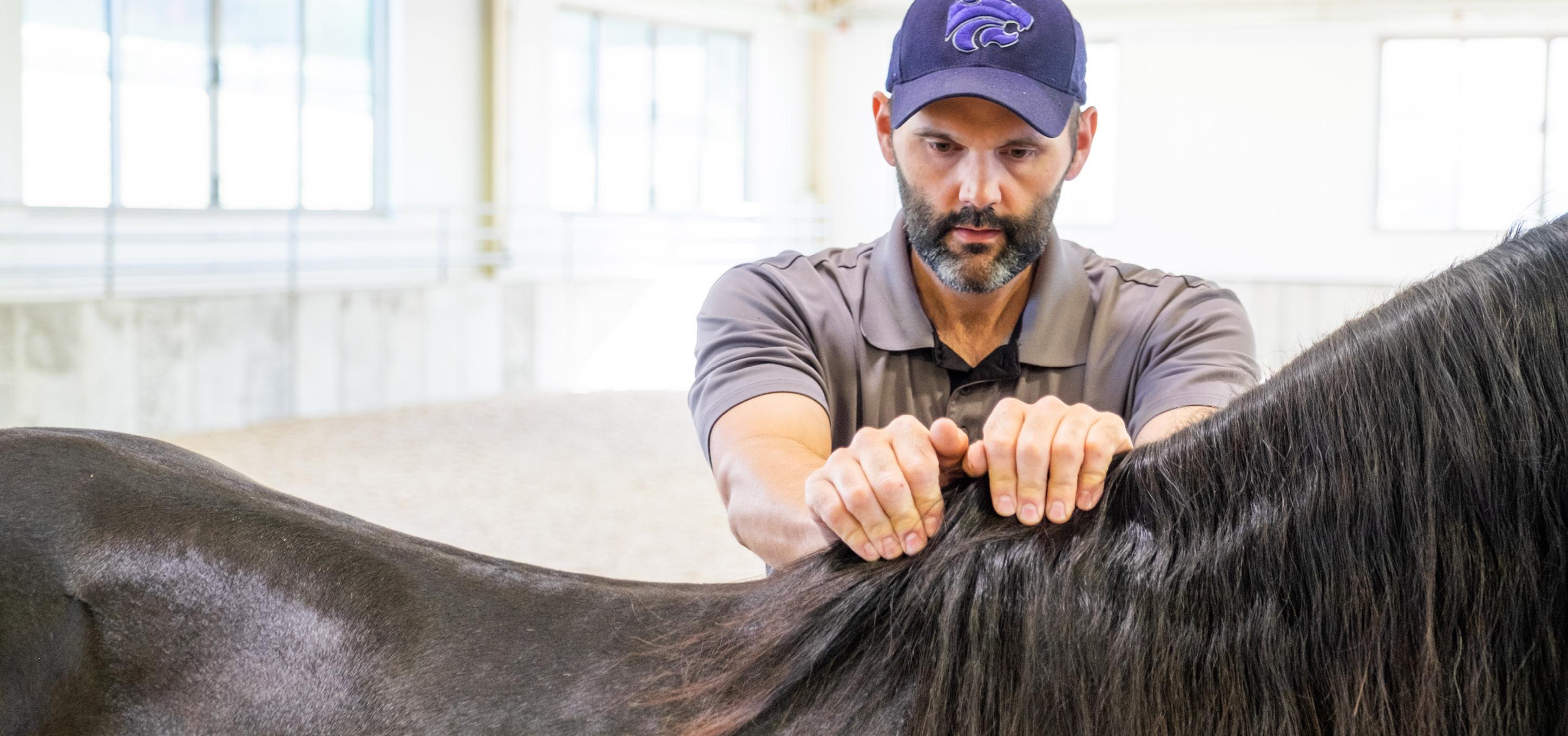
Dr.
conducts a chiropractic adjustment.

Neurological diseases can cause gait abnormalities and poor performance (Table 3). An abnormality in the neurological system requires a thorough neurological examination which includes gait evaluation similar to a lameness exam with special tests of coordination. Clinical signs of neurological disease can include stumbling or even falling, intermittent lameness or shifting lameness, in coordination termed ataxia, irregularity or asymmetry of gaits, among others.
Equine gastric ulcer syndrome may be a cause of poor performance in
Neurological Disease (Table 3)
Cervical vertebral compressive myelopathy (Wobbler syndrome)
Equine protozoal myelitis (EPM)
Equine degenerative myelopathy (EDM)
horses. Other clinical signs of gastric ulcers can include colic episodes that often recur, teeth grinding, change in or reduced appetite, girthiness, poor body condition or poor haircoat, change in behavior to anxiety or even aggression. Gastroscopy (endoscopic exam of the stomach) is used to definitively diagnose gastric ulcers after a 14-16 hour fast. It is important to consider that gastric ulcers may be secondary to another ailment or condition or is just occurring concurrently and may not be the cause of poor performance.
Because there are so many various causes of poor performance, your veterinarian will need time to perform
Type I: young fast-growing horses, symmetric ataxia and weakness of all limbs
Type II: older horses with osteoarthritis of the joints between the vertebrae, ataxia, decreased range of motion of neck or pain with neck movement
Asymmetric ataxia and weakness, focal and asymmetric muscle atrophy
Typically signs of symmetric ataxia and weakness typically starting in the first year of life and an association of vitamin E deficiency
Older horses (5-15 years old), typically Warmbloods, severe behavioral changes under saddle (spooking, spinning, bucking, bolting) and change in personality on the ground
Radiographs of the neck (Figure 3)
Myelogram (contrast injected around the spinal cord with radiographs; under general anesthesia)
Computed tomography (CT) where available
Cerebrospinal fluid tap and blood testing for EPM
Perform diagnostics to rule out other causes of neurologic disease
Vitamin E levels measured as a screening test, but may not be abnormal at time of identifying neurologic signs
No antemortem test
thorough examinations on your horse. They may even refer you to a specialty hospital like Kansas State University to have access to a variety of specialists in internal medicine and surgery and lameness and to have access to a variety of diagnostic tools and procedures. Ultimately the goal of the team veterinary work-up is the goal of the owner: to determine if there is a medical problem, what that problem is, and how can we help treat or manage that problem to get your horse feeling and performing better!

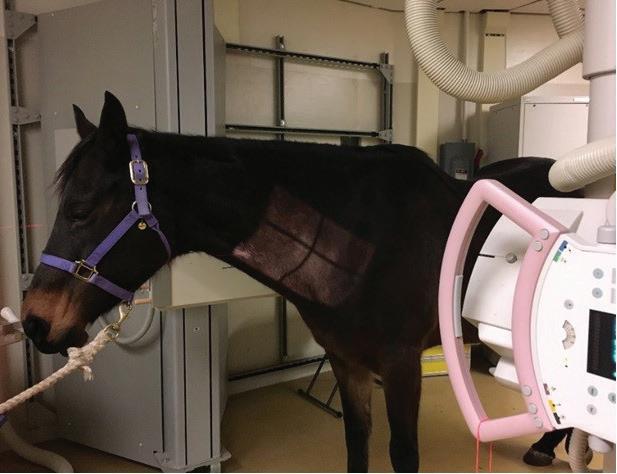

All the horses in the barn get the same amount of feed every day; it makes feeding time much simpler. The warmbloods look super. Their weight is good, and their coats are gleaming. However, the one Thoroughbred in the barn who arrived a little thin six months ago has not put on any weight. In fact, he has lost body condition. He is getting grain just like the other horses, so what could be wrong? A veterinarian has thoroughly examined the horse and nothing appears to be wrong. Could it be as simple as insufficient caloric intake? What kind of changes can be made to his feeding program to encourage weight gain?
Sometimes, getting a thin horse to gain weight is simply a matter of increasing the caloric density of the diet. Other times, the diet may need to be higher in calories because of a medical, psychological or environmental problem.
The metabolic rate determines whether a horse is an easy or hard keeper, and the variation between horses can be extreme.
Metabolism is the speed at which the body burns fuels for energy in order to maintain normal body functions. A slow metabolism can function on little input of fuel energy. Conversely, a fast metabolism needs a higher caloric
intake in order to function properly. In general, members of certain breeds have faster metabolisms and need more food to maintain body condition than members of other breeds. For example, Thoroughbreds usually eat more per pound of body weight than draft horses. There is also variety within a breed. For instance, some Thoroughbreds are easy keepers while others require intense management to maintain body weight. Temperament often goes hand in hand with metabolic rate. A nervous horse may require more calories than a calm tempered one to maintain the same body condition. A tense horse may spend more time stall walking or weaving while the calm horse conserves energy stores.
A thin horse requires energy in the diet to ensure proper functioning of body processes and to build fat stores. Energy is a general term, yet many horsemen associate the word energy with mental energy. In this article, energy refers to the potential of a feed to fuel body functions and exercise. Weight gain in the horse can be attributed to protein or fat deposition. When a horse does not have enough calories or protein in the diet, the body will break down its own muscle tissue and deplete much of the adipose tissue or fat.
This results in emaciation with poor muscle definition and protruding
bones. When the diet has excessive calories, the body will build muscle and adipose stores. The simplified solution to poor weight is to increase the caloric content of the diet while ensuring adequate protein content. The three nutrients which can supply energy to increase the caloric content of the diet in the horse are fiber, starch and fat. Each nutrient is utilized for energy in a slightly different way in the body which, depending on the horse, can be advantageous or not.
Of the three major energy sources for the horse, fiber is the most important, most underestimated and the safest. Fiber is the major component of grass and hay. Some horses can maintain their weight on fiber sources alone. For the hard keeper, however, fiber alone will not maintain weight, but there are fiber feeding strategies that can increase the ability of the horse to derive energy from fiber.
The fiber portion of a plant consists primarily of cellulose, hemicellulose and lignin. Residing in the intestinal tract of the horse (cecum and colon) are billions of microbes which break down the fiber into a physiologically usable form, volatile fatty acids. These volatile fatty acids pass into the bloodstream of the horse where they can be transported to sites which need energy or tucked away as energy


stores in the form of adipose tissue or muscle glycogen. Most of the cellulose and hemicellulose is easily digested by intestinal microbes (digestible fiber); the lignin is not digestible (indigestible fiber). Therefore, as lignin content of a feed increases, digestibility decreases. As digestibility plummets, less energy is available to the horse. Lignin is the carbohydrate which gives the most structural support to a plant; rigidstalked vegetation will contain more lignin than limp-stalked plants. For instance, there is little lignin in the soft leaves of the alfalfa plant (lucerne), but a much higher content of lignin is present in the rigid stem. If there is more leaf and less stem, or if the stems
Gaining weight in horses can be as simple as a caloric density increase, or changes to medical, psychological or environmental problems.
have not matured to become stiff and inflexible, the digestible fiber portion of the hay will be higher. A young plant harvested prior to maturity will have a lower lignin content than a plant allowed maturing before cutting.
Fresh green spring grass is much higher in digestible fiber than parched summer grass. A horse can draw more energy from a high quality, early harvested hay (whether grass or legume) than a mature hay. Pasture is also a source of fiber. The digestibility of pasture is usually higher than hay because the curing process of haymaking results in digestible fiber losses.
When comparing the energy content of alfalfa (lucerne) and grass hays, alfalfa hay can provide a horse with more energy than grass hay of similar quality. On the other hand, low quality alfalfa hay which is composed of more stem than leaf is not a rich source of energy. More energy could be provided with grass hay that has very little stem and an abundance of visible green grass blades. Maximizing forage quality should be the first adjustment when trying to achieve weight gain.
When quality fiber in the form of pasture or hay is not available, or if the horse does not readily eat hay, there are alternative fiber sources that may add fiber energy to the diet. The most common are beet pulp, soy hulls, wheat bran and alfalfa pellets or cubes. Beet pulp is about 80% digestible fibers (as compared to 50% for the average hay).
Soy hulls are a by-product of soybean production. Soy hulls are the skin of the bean (not the husk or pod) that is knocked off before oil is extracted from the bean. Commonly used in commercial horse feeds, soy hulls are slightly lower in digestibility than beet pulp. If a commercially designed horse feed has soy hulls listed as one of the primary ingredients, it will be a good source of highly digestible fiber.
Wheat bran is commonly thought of as a fiber source, but it actually has about the same amount of fiber as oats. Wheat bran is a rich energy source because it is abundant in digestible fiber and starch. Wheat bran contains a large quantity of phosphorus, which
can potentially disrupt the calcium and phosphorus ratio in the diet. On the flip side, wheat bran complements a diet high in alfalfa hay because of the calcium in the alfalfa.
When good quality forage is unavailable or if hay intake is minimal or difficult for a horse, the diet of the horse can be supplemented with alfalfa pellets or cubes. Both products are made with alfalfa that has been harvested when digestible fiber is at its peak. Thus, alfalfa pellets and cubes provide energy to the horse. Alfalfa hay is often combined with timothy hay or whole corn plants to create cubes lower in protein and calcium content than pure alfalfa cubes. Caution is necessary when feeding pellets as some hay should still be fed, if possible, because of the important laxative effect of long fiber in the diet.
Supplements are available that may help with fiber digestion if the horse has a problem with the balance of the microbes in the cecum or colon. Yeast has been researched and found to improve fiber digestibility. Some commercial feeds come with yeast already added or yeast products are sold which can be top-dressed to the ration.

Probiotics are also thought to help improve fiber digestibility. Because the microbial population in the hindgut can shift out of balance, researchers believe the addition of more bacteria in the form of a probiotic restores bacterial stability, thereby improving digestion of forage. Also, commercial products are available that combine yeast and a probiotic for maximal regeneration and efficiency of the microbial population.
When a horse cannot maintain weight on hay or grass alone, the addition of starch in the form of grains has been the most traditional method of increasing the energy density of the diet. Obtaining energy from starch is actually more efficient because it is a simple enzymatic process. The end result has to feed fewer pounds of grain than hay to supply the equivalent amount of energy to the horse. Grains are an excellent source of starch for the horse, but they can be hazardous to the digestive tract. The starch molecules found in grains are complex polysaccharides that, when attacked by the enzyme amylase in the small intestine, can be broken down to very simple sugars, which are easily
absorbed into the bloodstream.
From there, the sugars in the blood are distributed to where they may be needed by the body for energy or they may be stored as muscle glycogen or adipose tissue for future use. The limiting factor to starch digestion in the horse is the production of amylase in the intestinal tract. Amylase production has been found to be quite variable among horses.
Without sufficient amylase in the intestinal tract, much of the starch in the diet passes through to the large intestine where it is fermented. This is undesirable for two reasons. First, the amount of energy produced from starch by fermentation is less than the amount produced by enzymatic means. Second, excessive fermentation of starch drops the pH of the hindgut, which will decrease the efficiency of the bacteria that digest fiber and produce energy.
To further complicate the situation, not all starch molecules are created equal. Studies have shown that the oat starch molecule is small and easily digested by amylase. On the other hand, the starch molecules of corn and barley are large and not easily digested. If the corn or barley is treated with

heat, it changes the nature of the starch molecule and makes it more easily digested by amylase.
Therefore, it is better to feed steam rolled or cooked barley and steam flaked or super flaked corn than their untreated counterparts. The process of pelleting involves heat which results in improved enzymatic digestion of corn; extruding improves it even more. When deciding on a commercial mix for the horse, look for one that uses grains that have been processed to allow for optimal digestion in the small intestine of the horse.
While grain is a concentrated source of energy for the horse, there are some inherent dangers with feeding excessive amounts. When desperately trying to get a difficult horse to gain weight, it is often tempting to keep increasing the amount of grain being fed. Unfortunately, there is a point of no return when a horse gets too much grain in its digestive tract and the delicate balance of the microbial population is upset. At this point, many horses also lose their appetite for forage and the situation worsens. No matter how much grain you feed, the horse will probably lose more weight. The minimal amount of forage a horse requires is 1% of its body weight. Therefore, a 1000-pound (450 kilogram) horse needs a minimum of 10 pounds (4.5 kilograms) of hay per day in order to maintain a reasonable balance of the microbial population. The rest of the diet should be designed around the minimal forage requirement.
The danger of feeding too much starch occurs because certain horses

have a sensitivity to starch overload, perhaps precipitated by low amylase production or large meals of unprocessed grains. The cascade of problems begins with too much grain passing from the small intestine to the cecum and colon. The starch in the grain is fermented by bacteria. The byproduct of starch fermentation is lactic acid, a substance which alters the pH of the hindgut to be more acidic. The acidic environment kills the bacteria. As the bacteria die, they produce endotoxins and laminitis trigger factors which can cause colic. The laminitis trigger factors that pass into the blood can also induce laminitis. Horses that suffer starch sensitivity should not be given high grain diets.
As with forage digestion, supplements designed to aid in starch digestion or utilization have been developed. Although there has not been definitive research performed on the benefit of adding enzymes to the diet, the theory is well founded. If amylase is the limiting factor in small intestinal grain digestion, adding amylase to the feed may reduce the amount of grain channeling into the cecum and colon. Although there are a few feeds and supplements containing enzymes on the market, their efficacy is still questionable. Enzymes are proteins which are sensitive to acidic environments.
Such environments denature the enzymes thereby making them inactive. All feed passes through the acidic stomach before reaching the small intestine, so how much enzyme
will actually reach the intestine intact and not be denatured? More research is necessary to establish the efficacy of feeding supplemental enzymes. Supplemental chromium may improve the metabolism of starch. The action of chromium does not have as much to do with aiding digestion as it does with the way the body handles the rise in blood glucose resulting from starch digestion and the consequential rise in insulin. Chromium yeast has been effective in reducing the incidence of chronic founder in some ponies and the incidence of chronic tying up in some horses with intolerance to high grain diets.
Almost all performance horses have some type of fat added to their diet, whether it is a slug of corn oil, a scoop of rice bran, a handful of linseed or a commercial high fat feed. Traditionally, fat was added to give the coat a healthy shine. However, recent research has brought to light an even better reason for feeding fat – it is an excellent energy source. Added dietary fat has proven to be an invaluable tool for packing weight on a hard keeper. As well as being a highly concentrated energy source, fat has several other advantages. Energy from fat does not make a horse flighty like energy from grain, and horses on high fat diets exhibit more endurance. There are differences between various fat sources which make one more useful than another in different circumstances. There are major differences between vegetable fats (oils) and animal

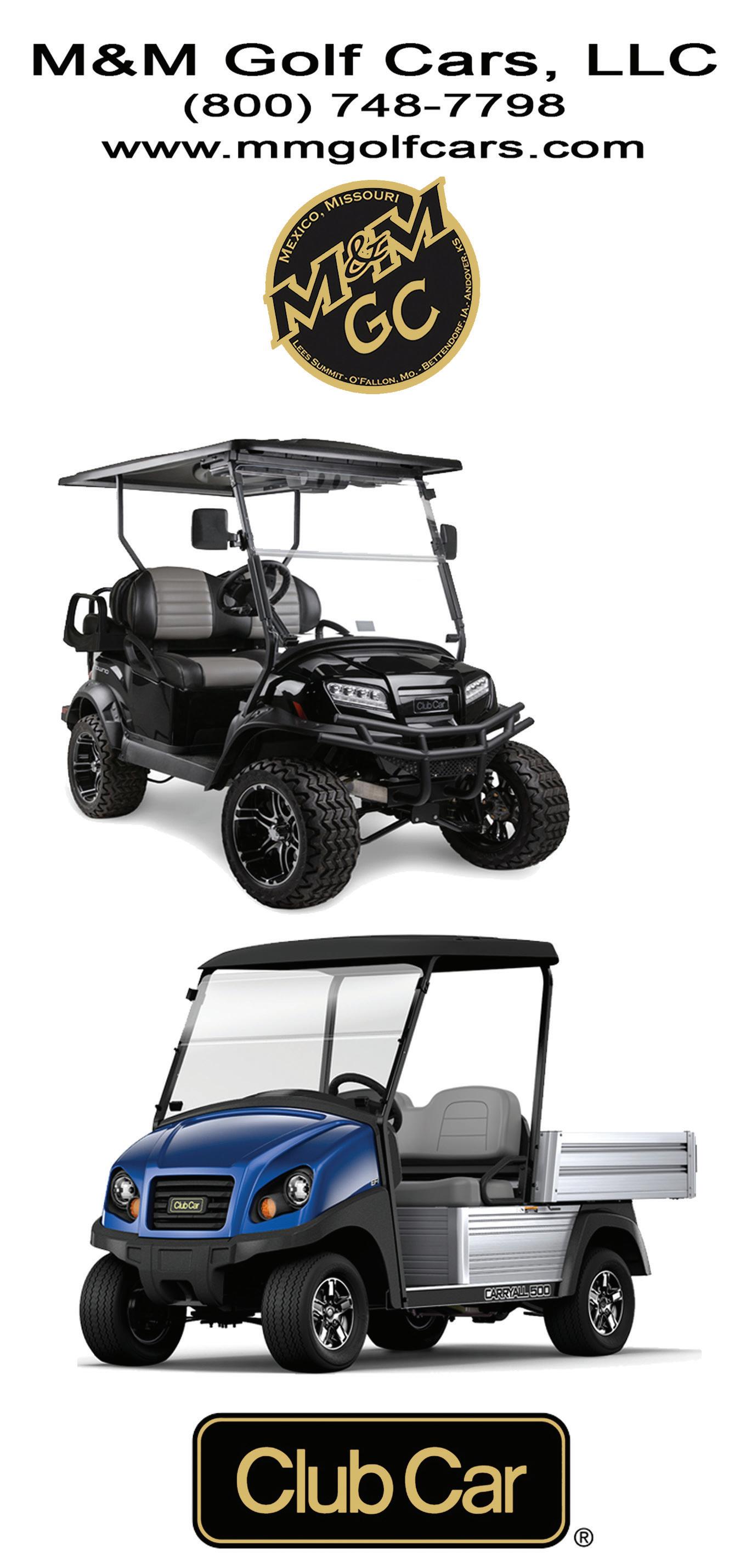
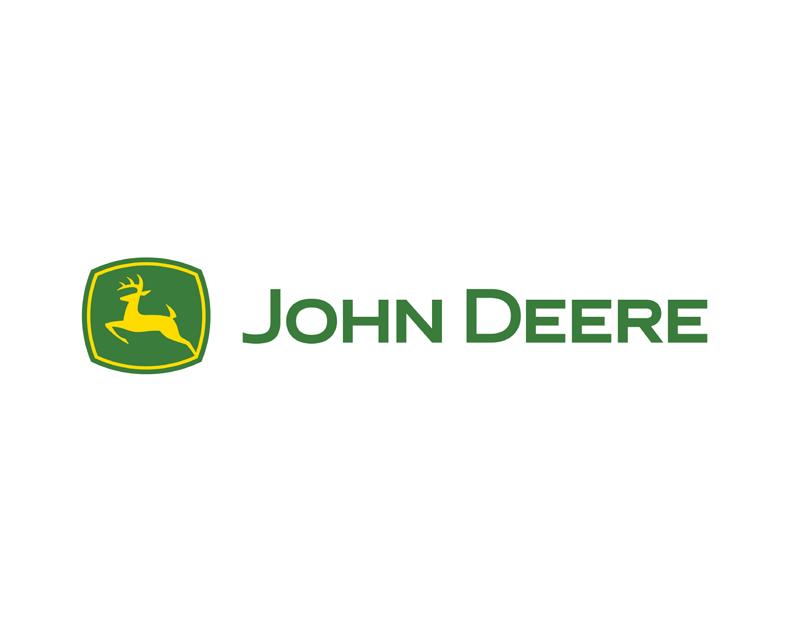

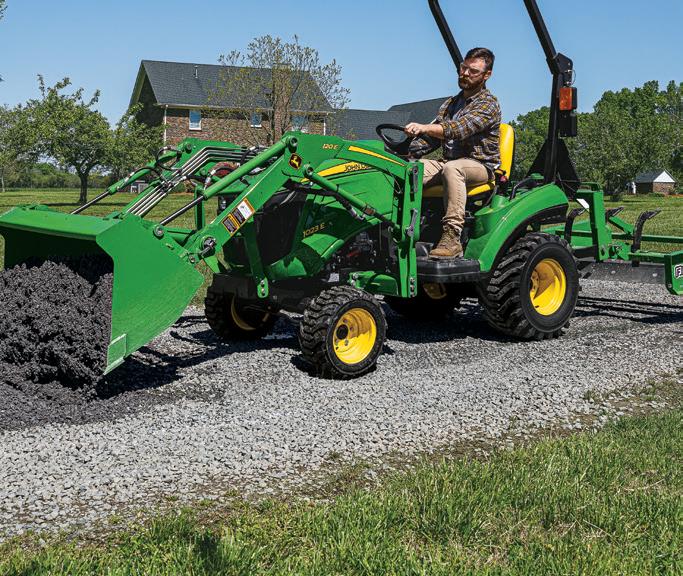
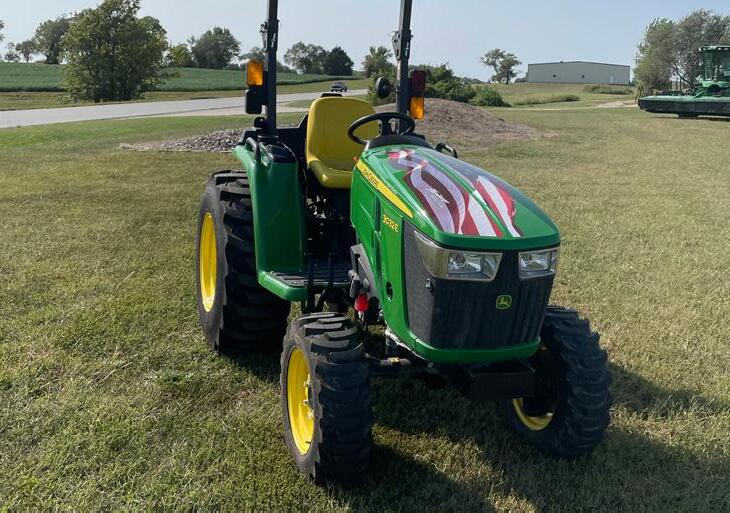
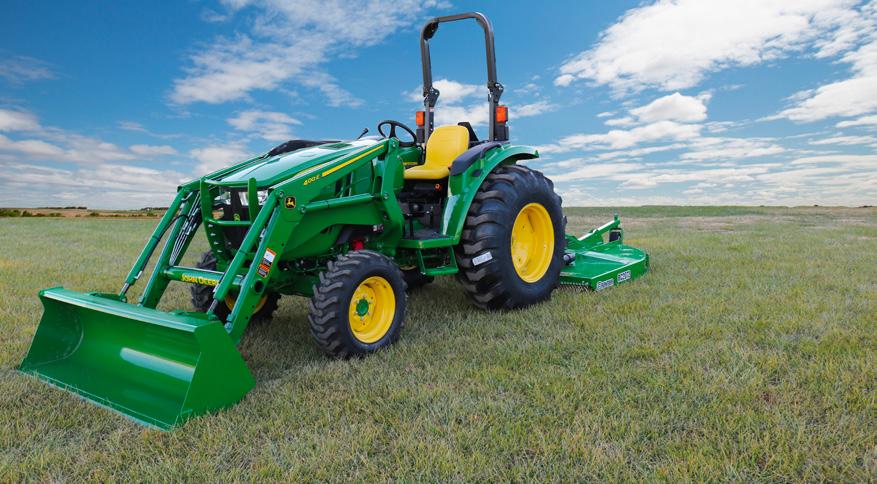

fats. The primary disadvantage of feeding animal fats is palatability; oils are much more appealing to the horse, although many commercial animal fats have flavorings added to improve the taste. Corn oil typically has remained the star in palatability studies, but most oils are palatable when corn oil is not offered as a choice in these studies. The second obstacle is digestibility. Animal fat is only about 75% digestible while oil is closer to 95%. With small intakes of animal fat, the digestibility difference is insignificant, but when higher levels are fed, that portion of indigestible fat can start to play havoc with the balance of microbes in the hindgut. Loose, runny feces are a sign that improper fat digestion is occurring. A third obstacle involves the long-term maintenance of horses on animal fat. Horses may tire of the flavor and go off of an animal fat product before refusing a vegetable oil.
Other common sources of fat include rice bran, linseed, sunflower seeds, full fat soybeans and coconut meal (copra meal). Rice bran is an excellent product for improving body condition and topline of thin horses because it is a combination of rice oil and highly digestible fiber. However, rice bran will rapidly go rancid unless it is stabilized by extrusion, and unsterilized products should not be fed. Look for research proven stabilized rice bran which is a popular horse feed supplement in many countries. Linseed, sunflower seeds and other seeds can also provide fat in the diet, but a notable problem does arise

when feeding vast amounts of seeds. As quantities of seeds fed increases, consumption will frequently slow, sometimes to the point of total refusal. Roasted soybeans are also great in small quantities but will increase the protein percentage of the diet too much if fed in larger amounts.
A high-fat diet is an invaluable tool for achieving weight gain in a skinny horse as long as the gastrointestinal tract of the horse will tolerate the fat. Normally horses have no problem digesting fat as long as it is introduced gradually into the diet. The greatest advantage of using fat as an energy source is that it helps to avoid excessive intakes of grain. Dietary fat works best when fed in conjunction with grain and/or highly digestible fiber sources like beet pulp (not neglecting good

quality hay or pasture). Many new feeds are appearing on the markets that incorporate high fat levels (> 6%) with high fiber ingredients like beet pulp or soy hulls.
Some horses are metabolically inclined to be hard keepers while others have medical, psychological or environmental reasons for having difficulty in maintaining weight. Increasing the caloric intake of a horse is not problematic if careful attention is paid to the feedstuffs offered to the horse. Manipulation of the amount and variety of energy sources will often achieve the ideal body condition on the hard keeper.

GauxPro Performance Facili ty 5585 Belle Center Road Joplin, MO 64801
DV on-line & Live Auction begins Saturday 12pm Noon – Completion!
Fun Activities - Clinics - Surprises Planned both Friday and Saturday!
Our Mission is to support the NMDA breed standard and to promote and educate for the miniature donkey breed preservation. We will be focusing on quality breeding and show donkeys for future generations.
Featuring a select group of Registered Miniature Donkeys being offered from breeders across North America & Canada!
For more Information see Face Book: Breeders Classic Miniature Donkey Sale Sale Contacts: LaDonna 417-540-7992, Stephanie 361-362-4419, Robin 920-362-4523

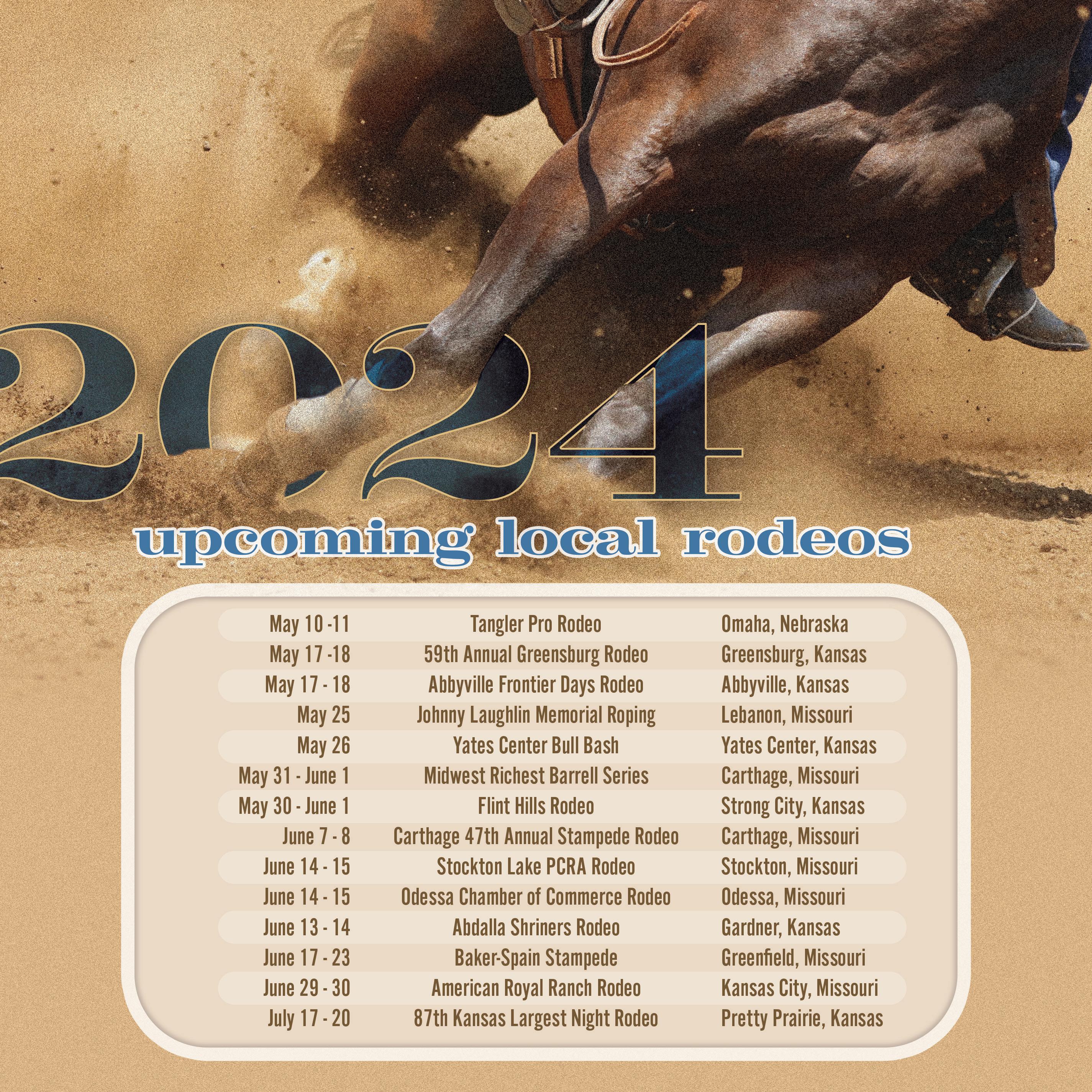

Selecting the right tack for your horse is crucial for both the animal’s comfort and the rider’s safety. Tack, which includes items such as saddles, bridles, halters, and more, must be appropriately fitted and suitable for the horse’s specific needs and the rider’s discipline. This essential guide aims to navigate the complex process of choosing the right tack, ensuring a harmonious and effective partnership between horse and rider.
The first step in choosing the right tack is to understand your horse’s unique needs. Consider the horse’s size, breed, and any specific physical characteristics or sensitivities. For instance, a horse with a particularly narrow or wide back may require a specially designed saddle to ensure a proper fit.
The saddle is arguably the most important piece of tack, acting as the primary point of contact between horse and rider. A well-fitting saddle ensures the rider’s weight is evenly distributed across the horse’s back, minimizing the risk of discomfort or injury. When selecting a saddle, consider the following:
Discipline: Different riding disciplines require different types of saddles. For example, reining saddles are built to
allow the rider to sit deeper in the stop, with free swinging fenders to allow closer contact and freer movement for the riders’ cues. The swells are usually lower, and the horn is smaller to prevent interference with the rider’s hand. In comparison, a cutting saddle should be built to be as close to the horse as possible, so that the rider can feel that their around the horse, allowing them to communicate while also staying out of the horse’s way in dynamic movements. The swells and horn are built higher, to help the rider’s balance while holding the horn for security.
Size and Fit: Both the horse and rider need to be measured to ensure the saddle is the correct size. A saddle that is too small or too large can cause pressure points, leading to discomfort for the horse and a lack of stability for the rider.
The bridle and bit facilitate communication between horse and rider, making the correct selection essential. The bit must be the correct size for the horse’s mouth, and the style should be appropriate for the horse’s level of training and sensitivity. The bridle should fit snugly without pinching the horse’s skin or causing discomfort.
Bit Type: From snaffle bits to curb bits, the choice depends on the horse’s training level and the rider’s skill. Green and young horses are often ridden in a
milder snaffle bit, while more advanced horses are usually ridden in a curb bit.
Bridle Style: Ensure the bridle matches your riding style and fits the bit you have chosen. Snaffles should always be paired with a browband and throat latch headstall. Curb bits can be used with any headstall that hold the bit in place and does not interfere with the bit’s function.
Cinches: These hold the saddle in place. It is important that they are secure and fit correctly to avoid slipping or causing discomfort to the horse. Protective Gear: Depending on your discipline, you may also need to consider protective boots for your horse’s legs.
Choosing the right tack for your horse involves careful consideration of both the horse’s and rider’s needs. Proper fit and suitability for the intended discipline are paramount to ensure safety, comfort, and effective communication. By taking the time to understand and select the appropriate tack, riders can foster a positive and productive relationship with their horses, enhancing their riding experience and achieving their equestrian goals.
For more information, visit aldunning.com.


Every horse owner (and their horses!) look forward to the warm weather and green grasses the spring and summer bring. But what if that lush green grass could actually be harmful to your horse?
Equine Metabolic Syndrome (EMS) is an endocrine disorder that is very prevalent in the modern horse. There are three findings associated with EMS: 1) obesity or regional fat deposits; 2) insulin resistance; and 3) subclinical or clinical laminitis.
A body condition score (BCS) of 7 or higher is considered obese. The ideal BCS for a horse is 5 out of 9. Some horses display true obesity, while others have regional fat deposits (i.e. a cresty neck or tailhead). Insulin resistance occurs when skeletal muscle and fat tissue fail to respond normally to insulin. This is similar to type 2 diabetes in people. There is a disturbance of glucose metabolism in which the cells that usually regulate insulin become less sensitive. These factors all contribute to a higher risk of laminitis, or “founder”, in a horse. A horse with EMS that is given access to grass further increases the risk of developing laminitis.
Horses with laminitis have very sore, tender feet that make it difficult to walk normally due to the inflammation of the lamina within the foot. Veterinary intervention is always required for a laminitic horse.
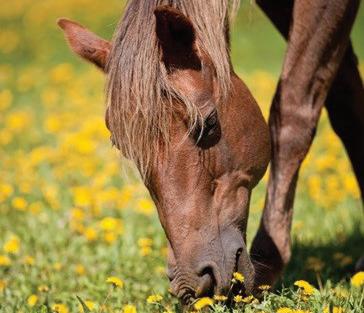
When looking to see if your horse may be affected by Equine Metabolic Syndrome, obesity, insulin resistance and laminitis are important indicators.
Horses are diagnosed with EMS via simple blood tests, combined with a thorough history and physical exam. Often, your vet will ask that you do not feed your horse any grain within six hours of the test. Treatment of EMS requires diet and management changes. For instance, your vet may recommend a low starch/sugar diet as well as a diet lower in protein to prevent insulin spikes following a meal. It is also often recommended to soak your horse’s hay for 30-60 minutes prior to feeding it.
The water will pull excess sugars out of the hay. The water will then need to be dumped out prior to feeding the hay. It will be recommended to not allow grazing or to minimize grazing via limited hours with a grazing muzzle in place. Your vet can help with the diagnostics, management, and any potential supplements needed. As long as your horse is able to do so, daily exercise is important for management of the metabolic horse. If your horse has laminitis, it may not
be possible to exercise. However, in the sound horse, regular and consistent exercise in the form of riding or lunging for 30 minutes per day can help to decrease the horse’s weight and improve insulin resistance.
Another endocrine disorder that is common amongst older horses is called Pituitary Pars Intermedia Dysfunction (PPID). This is often referred to as “Cushing’s disorder.” PPID is different than EMS, but is often tested for on the same metabolic bloodwork. With PPID, horses have enlargement of, and benign tumors in, the pituitary gland. This enlargement causes excess production of the hormone “ACTH.” ACTH then acts on the adrenal glands to cause increased production of the stress hormone, cortisol.
PPID has a myriad of potential clinical signs, but like with most diseases, not every horse will have every sign. Some of the most common clinical signs include delayed shedding or excessive coat growth, weight loss and muscle wasting, increased thirst and urination, changes in sweating, reproductive abnormalities, and frequent or chronic infections due to immune system suppression. It is not uncommon to see horses with PPID also have secondary insulin dysregulation.
Treatment for PPID is with a medication called pergolide. There is an FDA-approved product on the market called Prascend. Pergolide is a tablet fed once daily in order to control the clinical signs of PPID. Additional diet and management changes may be recommended,

especially if the horse also suffers from insulin dysregulation.
With any metabolic abnormality in your horse, it is important to have veterinary involvement to best manage
your horse’s condition. Having regular veterinary wellness care can help to identify any endocrine concerns early on for improved prognosis and control.



“M y horse is left-handed. He always turns easier to the left than the right.”
That comment is frequently heard from horseback riders when their mounts go a specific direction, take a lead, or spin one way in preference, or better than the opposite.
Consequently, it is assumed, that not unlike humans, a horse is left-handed, or right-handed, depending on the direction which is easiest to maneuver.
That’s not necessarily the case.
The subject is actually much more complex, according to Julie Goodnight of Goodnight Training Stables, Inc., Poncha Springs, Colorado.
Goodnight is known as The Horse Master on her award-winning RFDTV show. Her Natural Horsemanship Training techniques were reviewed at the EquiFest Of Kansas, held in March of this year.
In a discussion about horses performing one direction better than another, Goodnight compared horses to people.
“A horse’s brain is similar to a human’s anatomically, although they do not think and process information in the same way,” Goodnight said.
Human traits, such as artistic talent and higher logic abilities, are not qualities of horses. “They simply do
not have that intellectual capacity,” Goodnight contended.
Like the human brain, the horse brain is divided into two lobes, the right brain and the left brain.
“Also, like humans, the right brain controls the left side of the body and visa-versa,” Goodnight revealed.
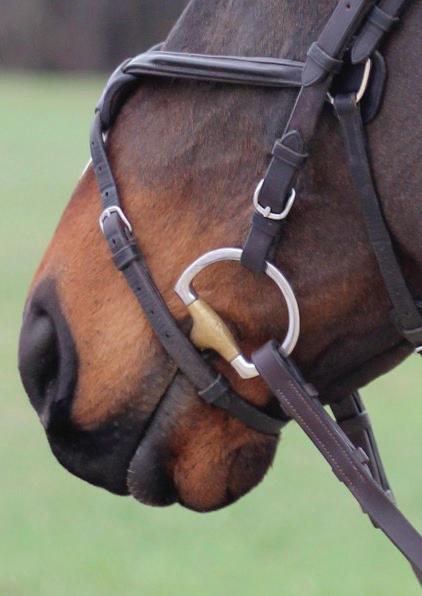
When training horses, it’s important to train both sides for skills to avoid onesided preferences.
Two hemispheres of the brain are connected with neurological connective tissue which allows messages to be transferred back and forth between the two parts.
“In humans, the connective tissue is highly developed,” Goodnight insisted.
However, in horses, it is undeveloped. Hence, the one-side nature of horses.
“Humans think with both sides of our brain all the time,” she continued. “When we talk about someone who is ‘right brained,’ we are saying that person’s right brain is dominant, and since the capacity of creativity is in the right side of the brain, that person has more artistic ability.”
Everybody has the capacity for creativity, but some people seem to have more talent than others.
“Remember, these are human traits, not equine,” Goodnight clarified.
A story was related about a horse that appeared to have mathematical abilities.
The horse could paw out the answer to any math problem, even when the owner wasn’t present. After much testing, animal behaviorists were stumped as to how the horse was able to do math.
Finally, someone had the idea to put a visual barrier between the human and the horse, and the horse could no longer solve problems.
“The moral of the story is that the horse had learned to watch the human for reactions that indicated he had the correct answer,” Goodnight explained. “He would begin to paw until he saw the right reaction from the person and then quit. It worked every time, and the horse was a genius, but he did not have mathematical ability.
“This is another example of how horses train humans, but that is a whole different subject,” Goodnight quickly added.
So, horses don’t have the intellectual capabilities for personality traits like in humans.
“Since we cannot interview the horse or test his skills, it is hard to say how the brain affects his personality,” Goodnight continued. “The dominant side does affect how the horse moves and responds to signals from its environment.”
It also affects how the horse learns. “Although horses have little intellectual capacity in terms of logic and problem solving, they do learn quite well,” Goodnight credited. “For better or for worse, horses learn the wrong things just as quickly as the right things, and it


Fixed-Formula Products

Fortified & Balanced



seems like it is far easier to teach them the wrong things.”
Since there is little communication between the hemispheres of the horse’s brain, a horse pretty much thinks with one side of his brain at a time.
“This has many implications for behavior and safety,” Goodnight analyzed. “For learning, this onesidedness means that we have to train both sides of the horse’s brain, but we should only work on one side of the horse at a time.”
In other words, when training the horse to be mounted, one would work first on the left side, train the skill thoroughly, and then go to the right side of the horse and start again with the training.
“For some horses, the second side will come quickly, but for others, it is like starting all over,” Goodnight recognized. “Being able to switch from side to side fluidly with any skill will only happen once the horse is thoroughly trained on both sides.
“How quickly a horse picks up a new skill on the second side is a good indicator of how balanced, or two-sided the horse may be, and of course is a good sign for performance training,” Goodnight said.

Designed by Ph.D Equine Nutritionists
Safely Made
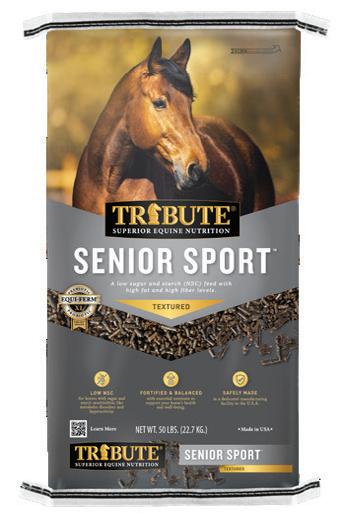
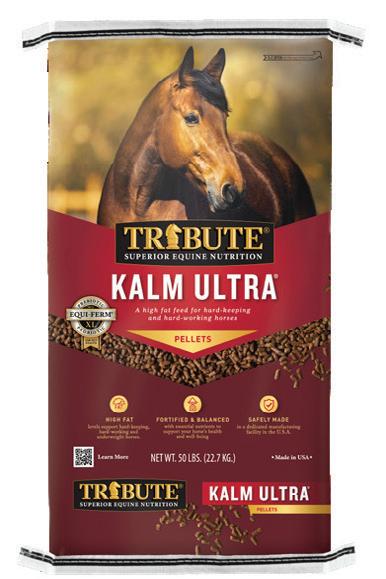
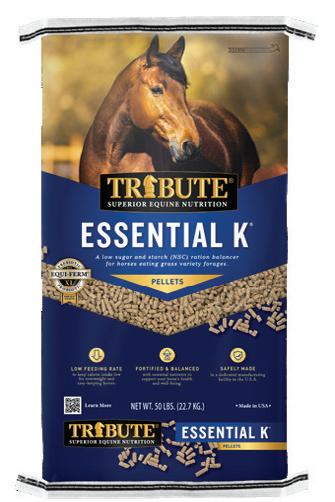


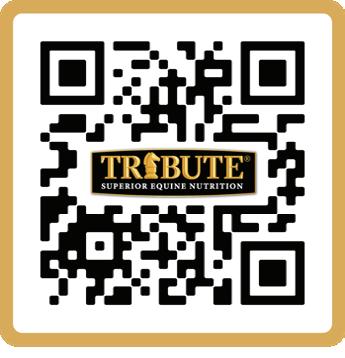

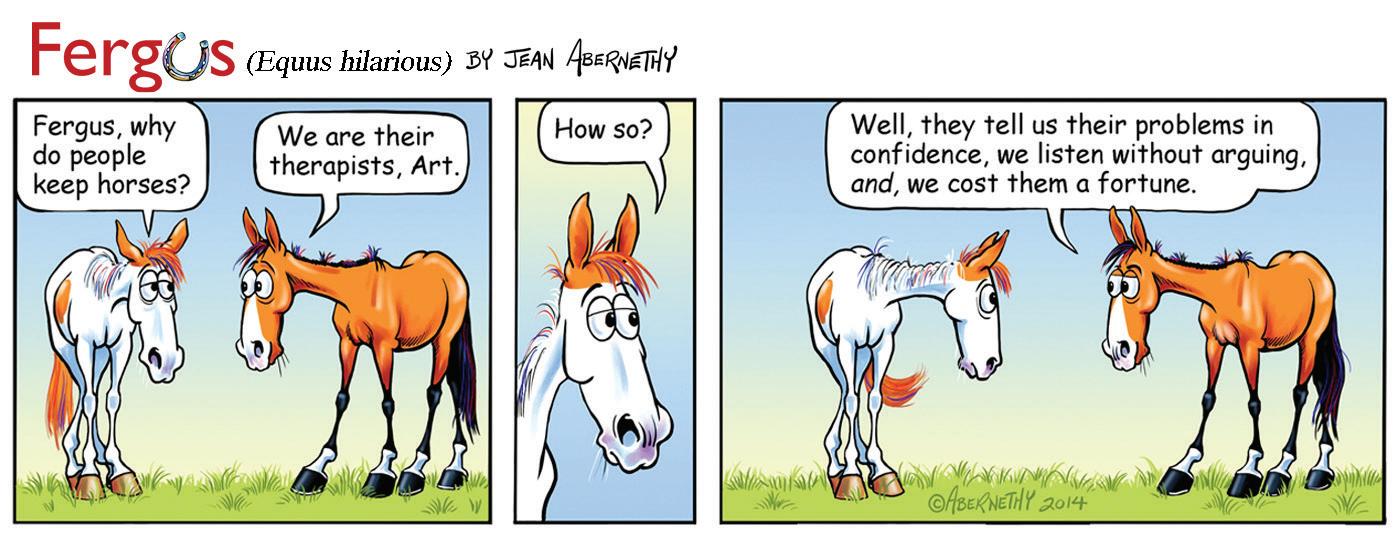
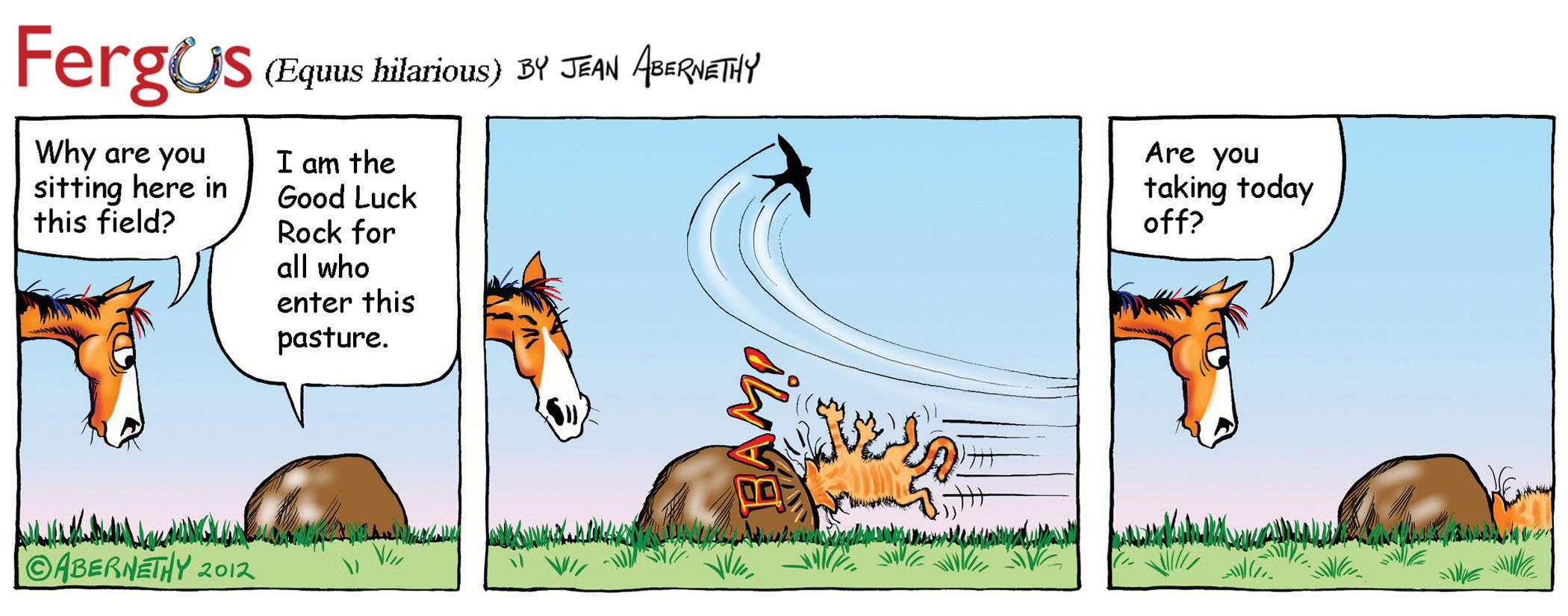


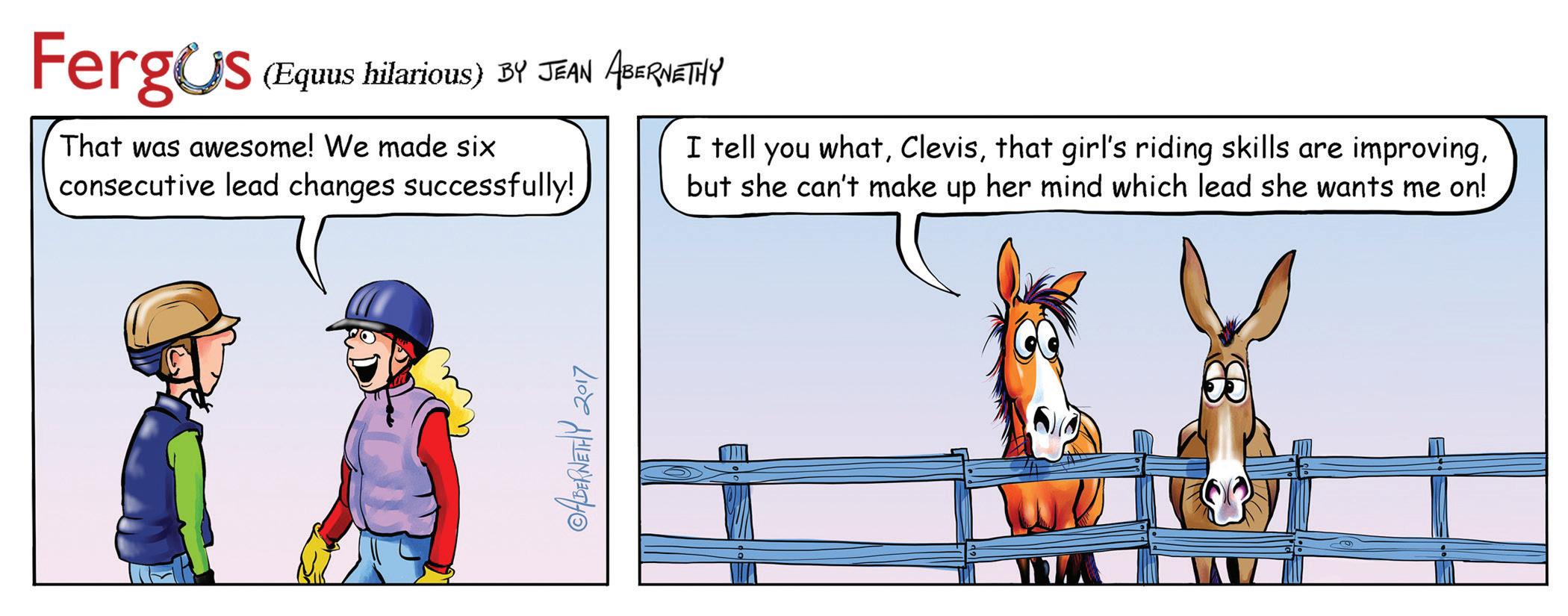

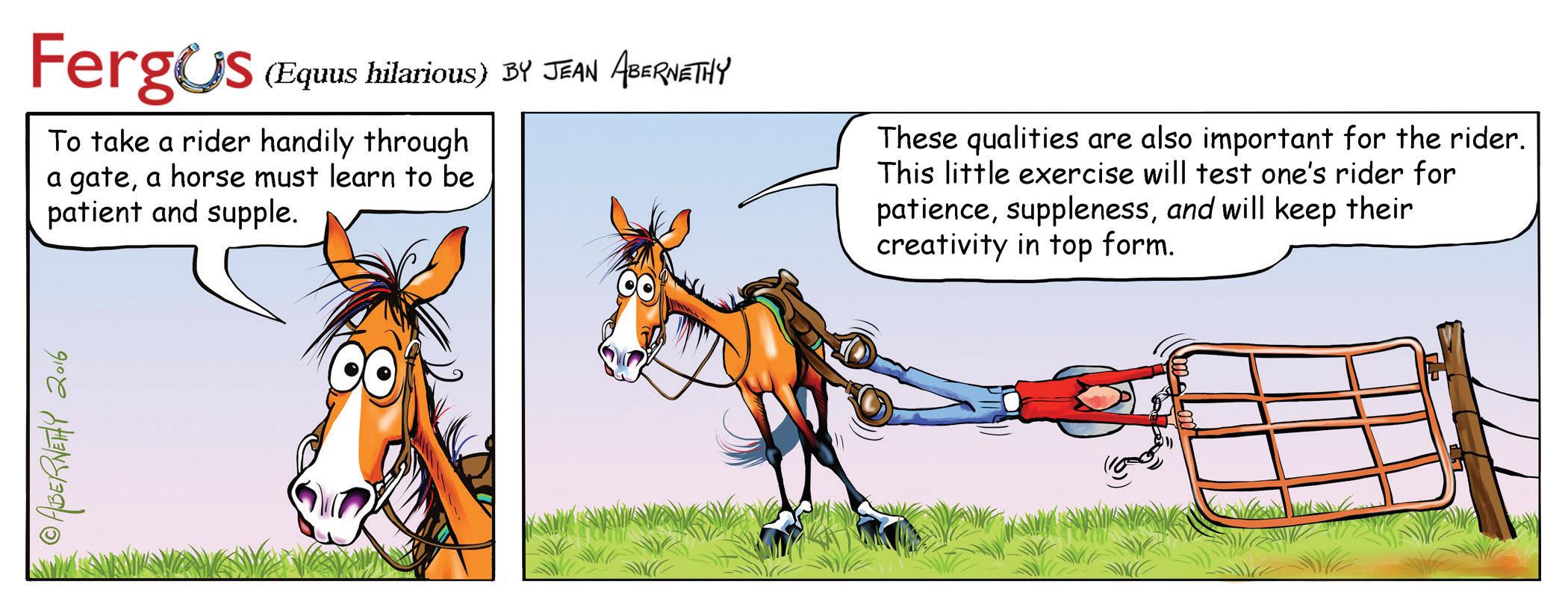

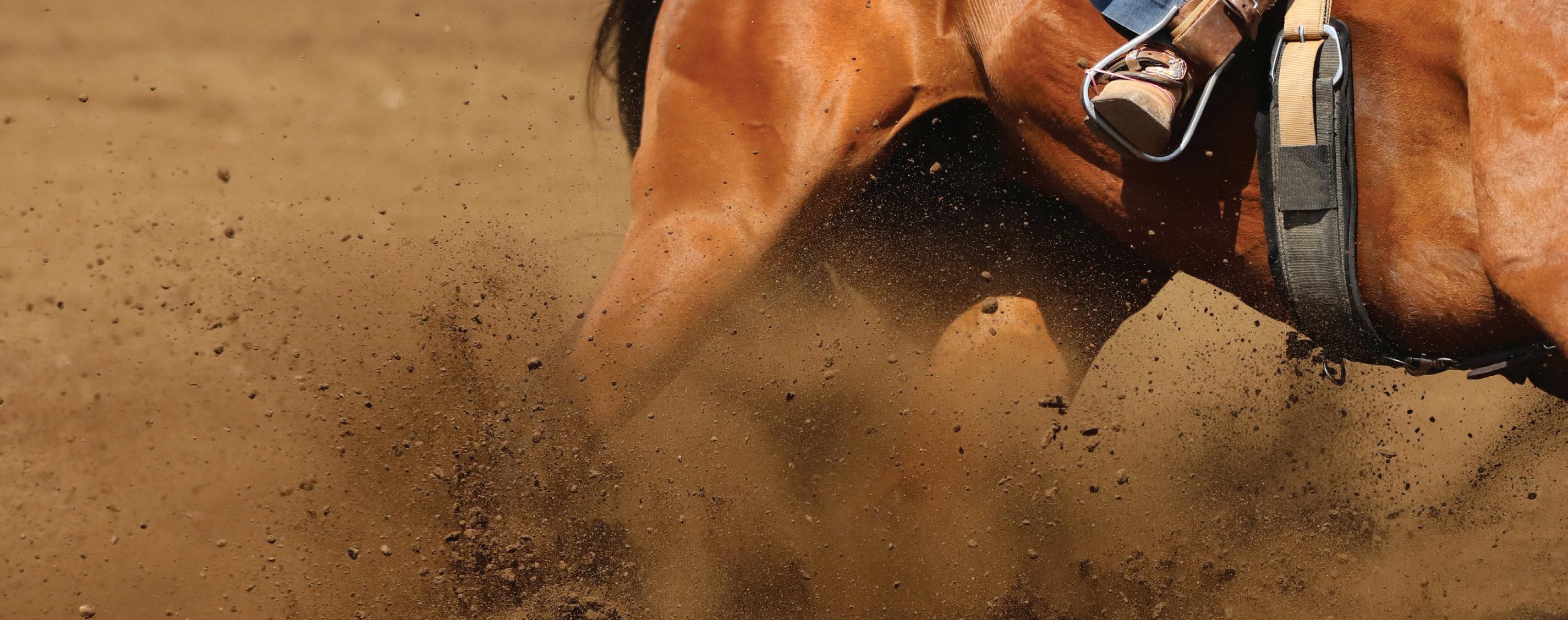
Aspooky horse can be difficult to ride. You might feel you never know what will set off the next jump, and sometimes one- horse spooking will set off the horses around him. It is easy for a spook to turn into a wreck. So, this month, we will cover how to help your horse learn to control his emotions and have confidence in you as a rider and leader, even in unfamiliar or scary situations.
There are two reasons a horse will be spooky. One, the horse is young and inexperienced, and genuinely afraid of something. Two, the horse is older and experienced but has learned that spooking at things gets him a release from the work he is doing. The exercises we are going to cover will help in both situations. For these exercises, you will want to start in a round pen if you have
access to one, and then move out to an enclosed larger arena. You will need at least one person to help you, and some potentially scary objects: a lariat rope, a large ball, a tarp, foam water noodles, or a flag are some suggestions, but you can use whatever you have on hand. Your horse should be saddled and bridled, preferably with a snaffle bit.
Remember with this exercise, as with everything you do around your horse, your safety and your horse’s safety are the top priority. Don’t try to push it and do something that gets you in a wreck. Take these exercises slowly, and allow your horse to build his confidence and have success, as you build your confidence to ride him through situations where he is nervous.
Start without any spooky things in the round pen, and work your horse in
figure 8’s and serpentines, focusing on softening his nose at each change of direction, and keeping his feet moving forward. I like to work these exercises at the trot if possible. The goal here is to get your horse’s feet moving and his attention on you. Once you have this without distractions, have your friend come into the pen and start adding distractions. Your responsibility as a rider is to keep working with your horse on the same exercises as if nothing has changed. If you lose focus and start looking at the new, scary distractions, you can hardly blame your horse for doing the same! Have your helper start small, maybe by just jumping around a little and kicking some dirt. See how your horse handles this. If he spooks, have your friend just keep at it while you keep at your training exercises.
If your horse does not spook when something new happens, pet him and let him know that was what you wanted. Keep adding more distractions and scarier things, and you can move out to the larger arena once you are feeling confident.
You will never be able to expose your horse to every possible scary situation and thing he might encounter in his lifetime. So instead of trying to train for every specific thing you might come across, instead you are teaching your horse to control his emotions and look to you for guidance in any situation. Remember, the important thing is not how your horse responds to the scary object. The important thing is how he responds to you and your cues in the situation. Don’t get after your horse and start punishing him if he spooks, just keep working

on your forward motion, changes of direction, and flexing. If you start punishing your horse every time he spooks, it just adds more anxiety to the situation as he anticipates the punishment, and that is not what you are after. However, don’t let the spook be a release. If your horse spooks, drive him right back up to the speed he was moving forward before the spook, or even a little faster. If he learns that spooking is a way to get the chance to stop and rest, your problem will just get worse.
Try to resist the urge to grab your horn for security when you think you are getting into a situation where your horse might spook. If you need to, grab the horn once he has spooked, but if you drop one rein and go for the horn before anything even happens, you take away your ability to guide your horse
confidently with both reins. He needs your calm and clear direction most when you are coming up to something scary, and by taking that away you are sending him the wrong message about your leadership ability.
Most of the problems we have with our horses are caused by something we are doing or not doing in our training and riding. So, remember to keep your attention on your training and your horse in all situations, and in turn he will learn to keep his attention on you and have confidence in you to guide him through anything. Enjoy your horses and until next time, may God bless the trails you ride.
For more information on Ken McNabb’s programs call us at 307-6453149 or go to www.kenmcnabb.com




Prospects and All Around horses for sale at all times! 25616 183rd Street; Leavenworth, Kansas 66048 Phone: 913-683-3838 Email: mgratnyqh@gmail.com

“Every horse has different abilities with widely varied personalities.”
Once again, a reminder has been emphasized that for these differences a horse might fit one person and not another.
Watching old Westerns on television brings to light how certain horses worked well in the movies. Yet, most, modern day horsemen would not like them being critical of the high heads and “cold jaws.”
Dad liked his horses with that kind of spirit, and the preference continued through his son. Generally, not speedy when racing, they’re more exciting to ride rather than a “deadhead.”
However, that preference is highly contrasting to skilled trainers who prefer low headed, easy turning horses.
Horseshow criteria might be a reason for appeal of more collected horses. They present a nice image to spectators
and can usually be ridden by a more diverse group of people.
Those who select a lower keyed caliber of horses contend they have their head and mind ready to work whatever requested.
It is interesting to study transitions in what increasing numbers of horse riders prefer. While horses have always been demanded to gather and doctor cattle, ranch horses are now being properly credited.
From being evaluated just for their eye appeal and calm disposition, horses are now selected for cattle working ability. Many of today’s largest horse shows feature cattle classes rather than halter showing and pleasure riding.
It is good to have multiple purposes for horses. Barrel racing, jumping, and cutting horses have too much action for many riders. They prefer and get along fine with a horse that walks
a given trail, sometimes jogging, or loping slowly.
Horses have been proven to be very therapeutic for people with a variety of physical and mental issues.
A useful purpose can be found for most horses, even those with a genetic disorder. They make fine “yard art,” that can be enjoyed from a distance in natural surroundings.
However, horses can also be dangerous and must be given complete respect. It is always best to disperse a horse if it has tendencies to be harmful.
Of all horse merits, they are livestock, not pets and must be recognized, treated, and managed accordingly.
Reminded of Genesis 47:17; “They brought their livestock, horses, donkeys, sheep, goats, cattle to Joseph, and he gave them food in exchange for all their livestock.”



Have you ever heard the term “coldblood” for a horse? If someone in your boarding barn is talking about a new horse and says it’s a warmblood, what does that mean? Since all horses are mammals and are therefore physiologically warm-blooded, the designations don’t initially make sense.
These informal terms are used to group different breeds loosely by their temperament. Arabian and Thoroughbred horses usually fall into the hotblood group, as they tend to be
a bit more nervous and energetic than some other equines. Coldblood horses encompass the draft breeds such as Percherons, Shires, Clydesdales, and Belgians. Large-boned and heavybodied, these horses were developed to use in draft and agricultural work, and were selected for a calm temperament.
Warmblood horse breeds were produced by crossing hotblood and coldblood horses. Many countries developed strains of these horses that could be used for riding or
for drawing wagons and carriages. Dutch Warmblood, Hanoverian, Holsteiner, and Trakhener horses are usually calmer than Thoroughbreds, but have the ability to move more athletically than the heavier draft breeds. Warmbloods are often the type of choice for many disciplines such as dressage, driving, and eventing.

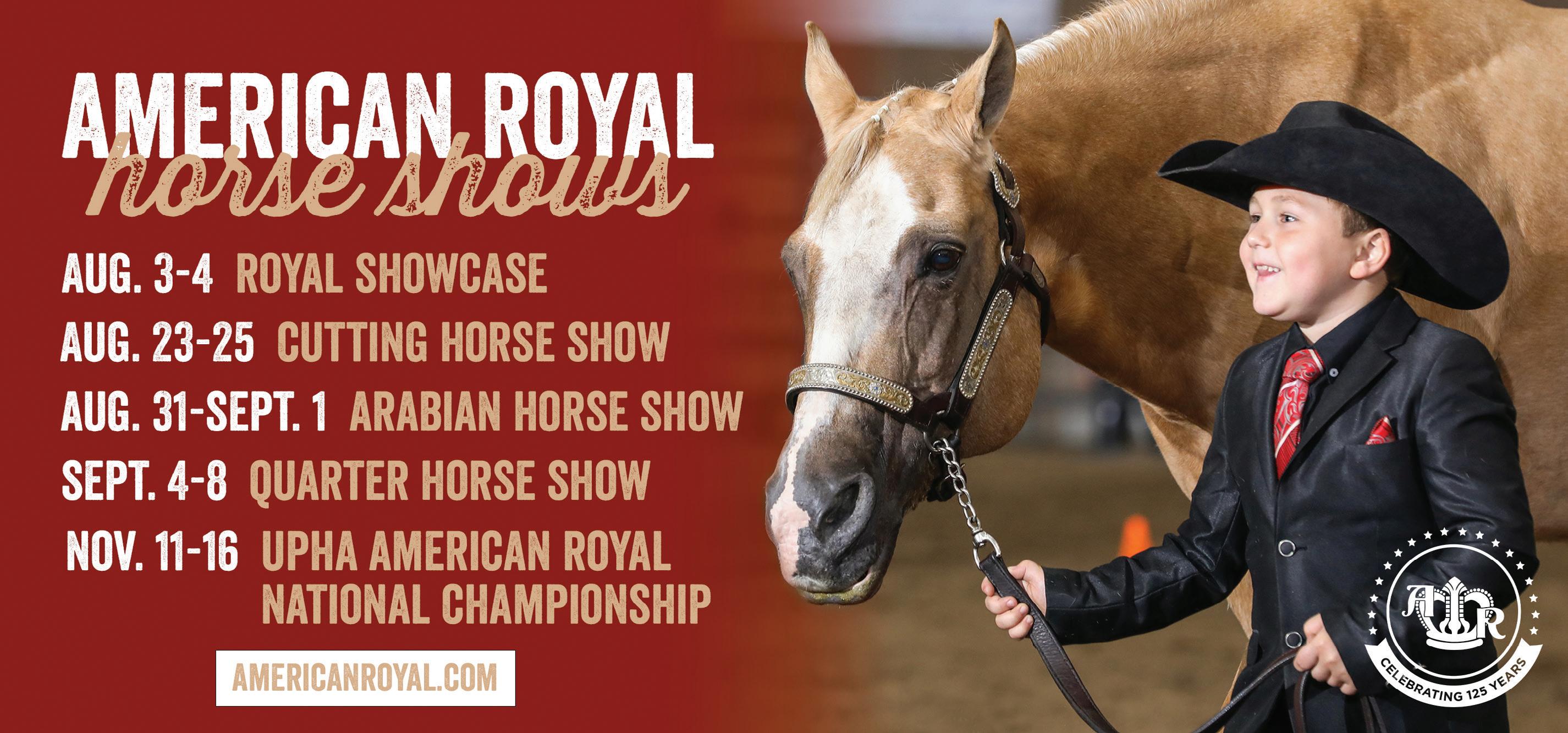

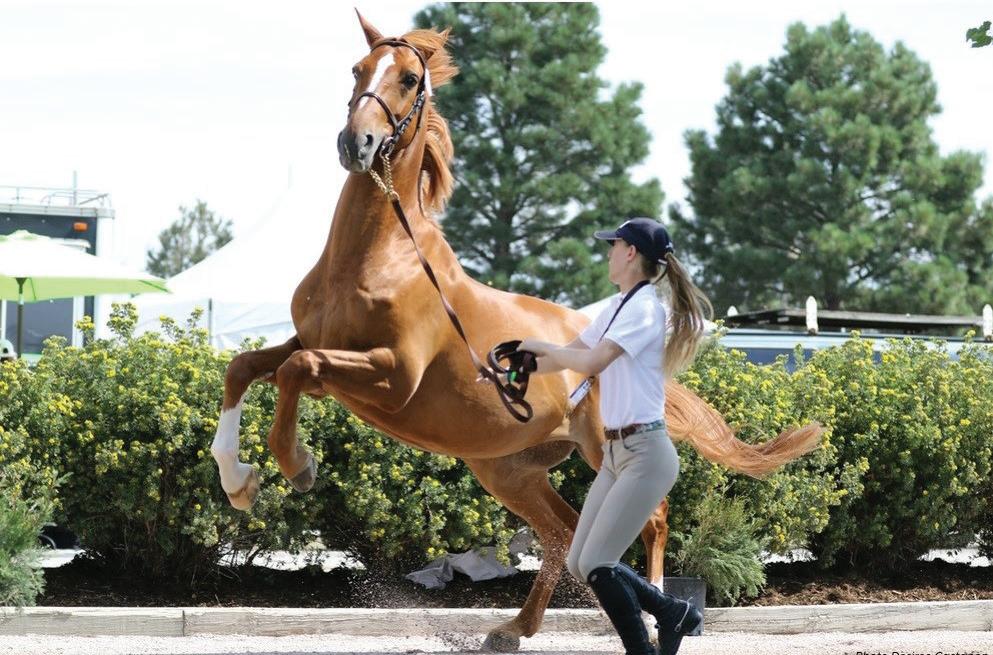
Are you a timid rider? I believe most of us at some time or another have moments of feeling timid, hesitant, or afraid on a horse. In certain situations and on certain horses, there may be times when it is wise to be hesitant or timid. Your intuition may be telling you to back off! However, there may be other times when your timidity turns into fear and you freeze or give wrong
signals to your horse. You may even be unconsciously telling your horse you are afraid, giving him the upper hand. When you give a fearful response over and over, he may learn to be spooky or naughty!
I have tips to help you master your fears and insecurity. These tips will also help you gain a better relationship with your horse.
I feel it is very important to honestly evaluate or assess yourself as a rider. Also look at why you may be struggling with being timid or fearful. Search yourself and do your best to be totally honest about yourself. I recommend you get some feedback from someone you trust, especially
if you are hard on yourself or do a lot of negative self-talking. People often don’t see themselves clearly. Sometimes just identifying your strengths and weaknesses will help you overcome them. When you are not aware or mindful of them, you can’t work on them.
If you struggle with fear, ask yourself why. You may have had a bad experience that is haunting you, or you may be honestly intimidated by the size of the horse. You may have just had so many bad experiences that they outweigh the positive, confidencebuilding ones in your mind. Research has shown that a negative experience will impact you and stay with you longer than a positive one. So give yourself a lot of positive experiences to overcome the negative ones.
When you become tense mentally, your body will also exhibit signs of tension. Your horse will definitely be able to feel subtle and significant changes in your body. I often teach people that a horse is full of moveable joints and parts, just like your human body. One of your goals in becoming a confident rider is to be able to move and flow with your horse. When you tense up, your body will usually resist the horse’s movement and energy flow, and interfere or move against your horse. This is very uncomfortable for your horse. Think of it from the horse’s perspective. If you and your horse are moving together, you are catching his

rhythm. Then all of a sudden, you see something before he does that might spook him. You then may: stop your breathing or take short, shallow breaths; tense your seat and stop moving with your horse; lean forward; or tense up through your hands or grab his mouth.
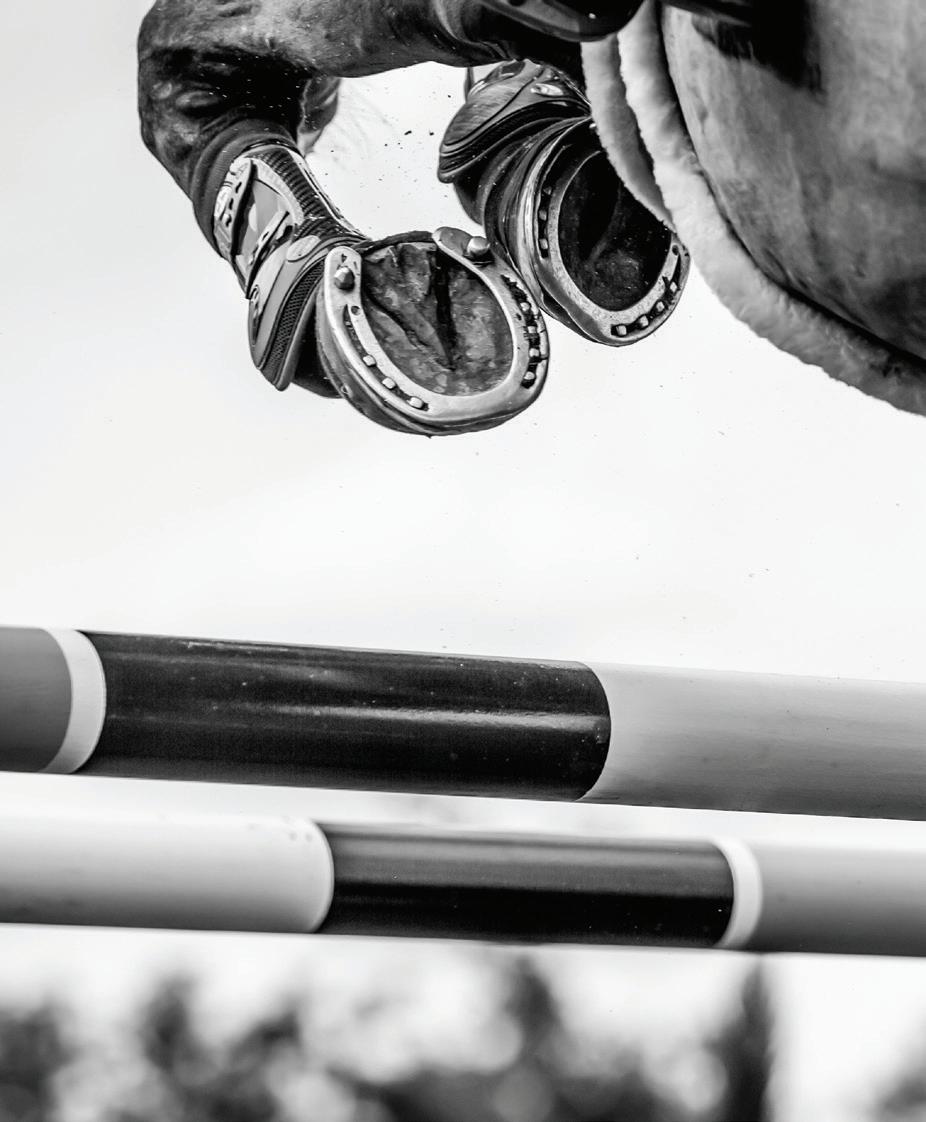
Your horse feels your fear through your body, and your body signals are like a loud alarm going off that danger is near. He may then see that “boogie man” and believe you that it is scary. He will then spook, just as you feared he would. You told him in numerous ways that he was unsafe. This is how riders can teach or program their horses to spook! The next time you tense up your body, your horse will be looking for danger. Here are some tips to help control your body signals when you feel yourself tensing up:
Take deep, full breaths and breathe using your diaphragm. Many times you can breathe your way past a potential spook or steady your nervous horse in a class at a show. When you continue with rhythmic breathing, you build his confidence and reinforce that he needs to listen to you. Deep, full breathing also keeps your spine and hips in the correct position on your horse.
Focus on your horse’s rhythm, and unlock your seat to stay moving with him. If he were to jump or spook and your seat were locked, you would have more of a chance of losing your balance. If you are flowing with your horse, your body will stay in the middle of him much easier.
I was once taught a trick to close your thumb and forefinger together to keep your hands relaxed and soft. Do your best to avoid tensing with your hands. Of course, if you need to hang on, do so…but keep your hands and their reactions separate from your body!
After you have given thought to your own abilities, also consider your personality type. Are you nervous or patient and slow? Fast thinking and reactive people can often make fast thinking horses nervous. Horses,
just like people, have a variety of personality types, energy levels, and confidence levels! Take a look at your horse and yourself, and see if you are a good match.
Check Your Level of Experience With Your Horse’s Level of Experience
It’s often said a green horse and a green rider aren’t a good match. A green rider will usually do better with an older, more experienced, confidence building horse. It can be a disaster if the personality types are a mismatch as well! If you are a timid, inexperienced rider, don’t choose a jumpy, reactive, green horse. If you are determined to choose a green horse due to your spending budget, or if you just want the experience, choose a slow thinking, slow reacting, willing horse. One that is not too dull or too sensitive. Horses, like people, can be extremely sensitive and thin skinned, or they can be thick skinned and dull! The better suited you are with your horse, the more success you will have!
My goal is to teach you to become more aware of yourself, your ability, and your own body, as well as to give you tools to help you gain control of your horse. I also want to impart to you the importance of knowing when to back off. If your horse feels like he is going to blow up, or you are losing control of where his feet are underneath you, you need to protect yourself. If my horse feels really high, I will get off and lunge my horse. If you don’t know what to do,

or feel out of control, seek the help of a professional.
One exercise that is extremely helpful is called “Follow the Nose”. I do this exercise often and if I have a difficult or scared horse, I will practice it a lot – even when he’s not scared. By doing this exercise regularly, it becomes a place of familiarity to him when he is scared. It is helpful because it puts your horse in a circle, and circles are very relaxing to your horse. It also allows you to regain control of his steps and his face because you are asking him to bend his head and neck, and step forward. It will also allow you to regain control of your horse’s attention and his feet. It redirects his mind towards you and your cues, and reminds him that you are in control!
Start the exercise by riding two handed and ask him with a direct rein cue to bend his head to one side. Use your hand soft and draw or pull without bumping if possible. Your direction of pull should be out to the side as if you were bringing your hand to the center of where his circle would be. Notice as you ask him to walk forward if he is stepping up and forward to his face. Many horses will drift out or cut in and try to make their own circle. Just reposition your hand accordingly to ask him to step up and forward. If he sucks back or refuses, just open up the circle and encourage him forward. I can tell if my horse is drifting or leaning if I start in one place and he takes me to another. Set a 10 to 15 foot circle in
your mind and ask his body to stay on it. That is the secret to this exercise. Once he will let you drive and control his steps, he will usually relax. It puts you back in control. It should never be done in a punishing, angry manner, but rather that you are taking his face and body and directing his steps. It takes his mind off of what is bothering him and puts you back in control.
Visualize yourself in control. If you have an intimidating or scary situation, visualize yourself getting through it with great success!
Use wisdom and be cautious. If you aren’t comfortable, don’t do it! Don’t let fear run you, but always use wisdom!
Set yourself up with a horse that will build your confidence.
Set yourself up for a good ride by making sure your horse is tired enough to think about working!
Use positive self-talk! Coach yourself, tell yourself you can do it. Don’t ever put yourself down.
Pick a coach or trainer who is reassuring, gentle, and uses wisdom deciding when to push you or back off.
Practice controlling your body. Remember your seat, your breathing, finding the horse’s rhythm, and keeping your hands soft and light.


“Every time you work your horse, you’re either training or un-training.”
This quote by Gordon Wright very accurately encompasses the equestrian experience. It also leads to the next question, which is better for horse training: positive or negative reinforcement?
Sometimes the questions and confusions are from a need for more understanding of the two methods. Let’s take a closer look at some examples of positive reinforcement and negative reinforcement.
Reinforcement is doing anything that increases the likelihood of the desirable behavior recurring. Positive reinforcement is adding something that the animal wants, called the reward so that the behavior you desire is more likely to recur. An example of positive reinforcement is asking a dog to sit and giving them a treat when they are sitting.
If positive means adding, then negative means taking away. Negative reinforcement is the method most people need clarification on. This form of reinforcement removes something to try to increase the likelihood that a behavior will recur.
In negative reinforcement training, you remove something from the training equation when a desired task is completed. An example of negative reinforcement could be when you add leg or rein pressure and the horse responds, the pressure is removed.
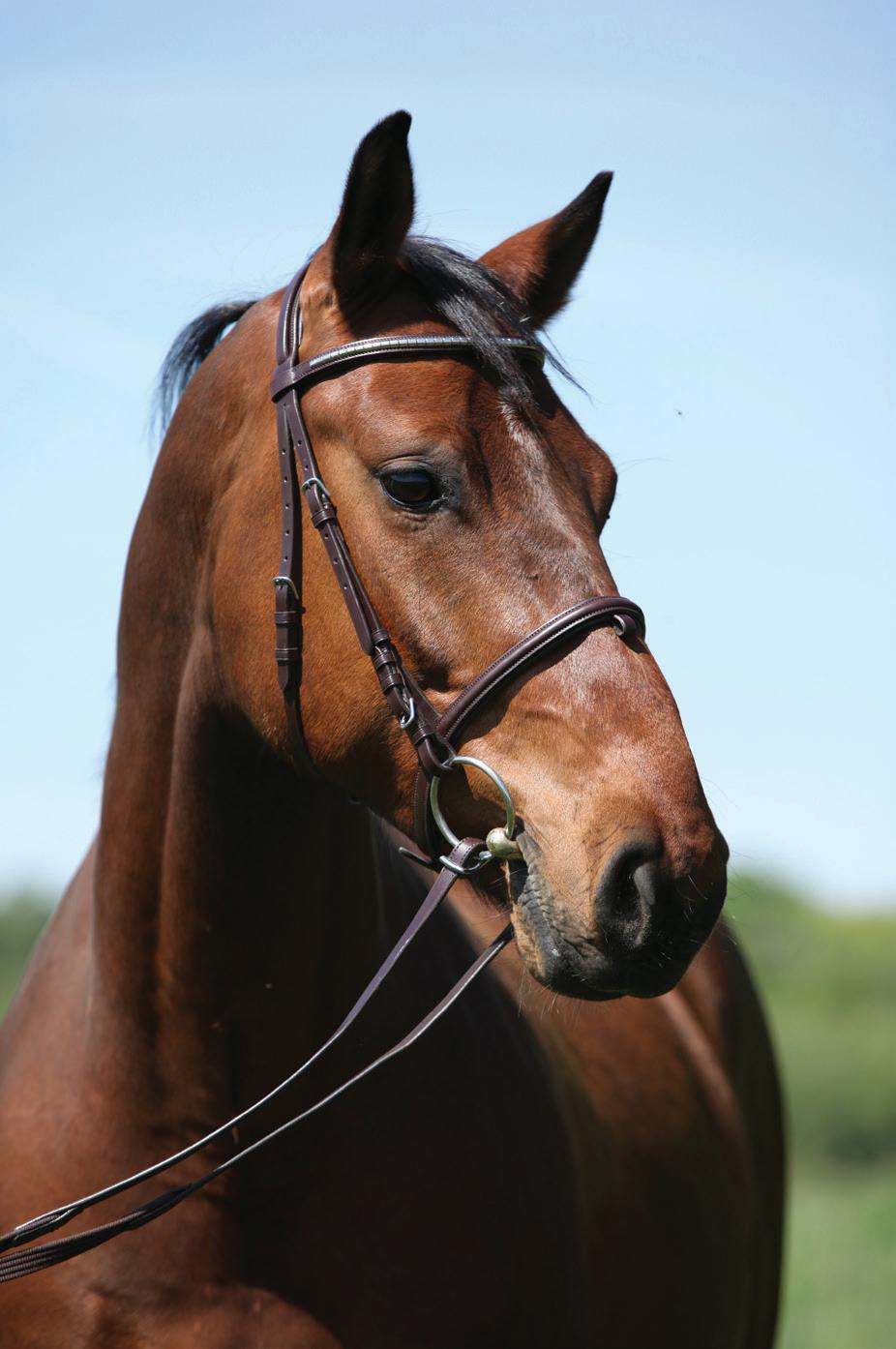
We think of punishment as hitting or yelling, but that’s not how behaviorists define it. Punishment is doing anything that decreases the likelihood of the particular behavior recurring.
Positive punishment is adding something aversive or bad to decrease the likelihood of the behavior occurring again. The animal behaviorist community has a general consensus that this method is not the most effective. An example of positive punishment is smacking a horse on the nose when they bite you.
This is operant conditioning or trial-and-error learning. Negative punishment is removing something the animal wants to reduce the possibility that a behavior will recur.
An example of negative punishment is the horse that mauls you for treats. If you reinforce that behavior by giving them a treat, they will do it more. However, if you either ignore them or take away the treats, it is considered negative punishment.
Another common area where you see negative punishment is with horses being pushy at feeding time. You open the door to give hay, and they stick their head out and try to grab the hay. If you wait until he backs up and moves his head away to give him the hay, this would be negative punishment (not giving the hay) and positive reinforcement when he backs up (giving the hay).


LINIMENTS FOR HORSES
A mainstay in wash stalls and grooming boxes, liniments are liquids or gels that are applied on the horse’s skin. A liniment provides superficial cooling or warming and some level of pain relief by temporarily soothing stiff or sore muscles and joints. Think BenGay for horses – that icy hot feeling with an unforgettable smell.
Liniments are typically alcohol, witch hazel, or oil-based. Ingredients such as camphor and capsaicin (from chili peppers) are often found in formulas designed for warming up areas of the body. While formulas with alcohol, menthol, eucalyptus, or wintergreen can reduce inflammation and can be useful in cooling down a hot horse. The alcohol evaporates quickly from the horse’s skin, which helps cool down their skin’s temperature.
Liniments may be labeled as topical antiseptics, meaning they’re safe to apply on superficial scrapes or cuts to help ward off infection. It’s important to carefully read each product’s label and directions. Not all liniments are created equal. Their active ingredients, application methods, strength, and aftercare can vary. The consequences of applying them incorrectly can mean burning or irritation for your horse.
Some products may also contain ingredients, such as capsaicin, that are considered forbidden substances by the USEF or FEI. Pay close attention to the liniment’s label if you are planning to compete. It’s always wise to ask your veterinarian if it’s the appropriate product to use for that specific situation.
• Temporary, superficial relief of minor soreness and stiffness
• Topical antiseptic properties
• Diluted with water and then applied as a bath or after the horse is towel dried
• Applied at full strength directly onto the horse’s skin (ex. shoulders, topline, loins, stifles)
• Applied as a skin brace (same theory as an aftershave) on the legs and then dressed in a standing wrap (commonly called “setting up”)
• Sweat wrapped with a cellophane layer under a cotton bandage to trap heat and reduce fluid build-up in the distal limbs
• Before training as a preventative for relieving chronically sore or inflamed areas
• After training to ease muscles, arthritis, or problem spots like windpuffs
• To treat fungal or bacterial conditions on the skin or hooves
Poultices are moist, combinations of clays – kaolin (white clay) or bentonite (clay from volcanic ash)— glycerin, herbs, minerals, and antiseptics. Poultices, depending on the ingredients, are used to relieve inflammation, pain, and swelling. On the foot, they may be used to draw out sole bruises and abscesses and can act as a cushion to provide comfort. Poultices are also great for after training or competition to improve tissue recovery. For perspective, a wide variety of clays have been used on horses for as long as we have cared for horses. Still, active research is continuing on the effects of poultices.
When a clay-based poultice dries, it draws out excess fluid from the tissues, and the evaporating water pulls out some of the heat along with it.
Osmotic (Epsom salt or sugar-based) warm poultices are often used for hoof abscesses, bruises, or sole injuries to soften the area, draw out fluid, and reduce inflammation. Epsom salt or granulated sugar may be mixed
with povidone iodine (Betadine) to combine the osmotic effects of the salt or sugar with the antiseptic effect of the iodine. This type of poultice is easy to mix and apply to the affected foot under a hoof bandage.
Body heat from the horse’s legs and from the standing wraps typically applied over top will gradually warm up the cold mixture. To counteract that warming, many horsemen will place pieces of damp brown paper, newspaper, or cuts from the paper lining of feed bags directly over the wet poultice. This helps maximize the poultice’s benefits by keeping the area moist and cool for longer. Animalintex is a dry poultice dressing that has both hot and cold applications. Therefore, Animalintex can have many different uses from reducing swelling to drawing out hoof abscesses, depending on the temperature of water you soak it in before applying.
Again, some poultices can contain ingredients, such as lavender, that are considered forbidden substances by the USEF or FEI. So, make sure you read the poultice’s label carefully if you are planning to compete.
BENEFITS OF POULTICES FOR HORSES
• Temporary pain relief to ease sore or stiff muscles
• Osmotic (fluid-drawing) agent to reduce inflammation and swelling
• Supports faster recovery

• Poultices for hoof packing may also provide some cushioning for sore feet
• Warmed (not hot) for treating pain, stiffness, and reduced range of motion
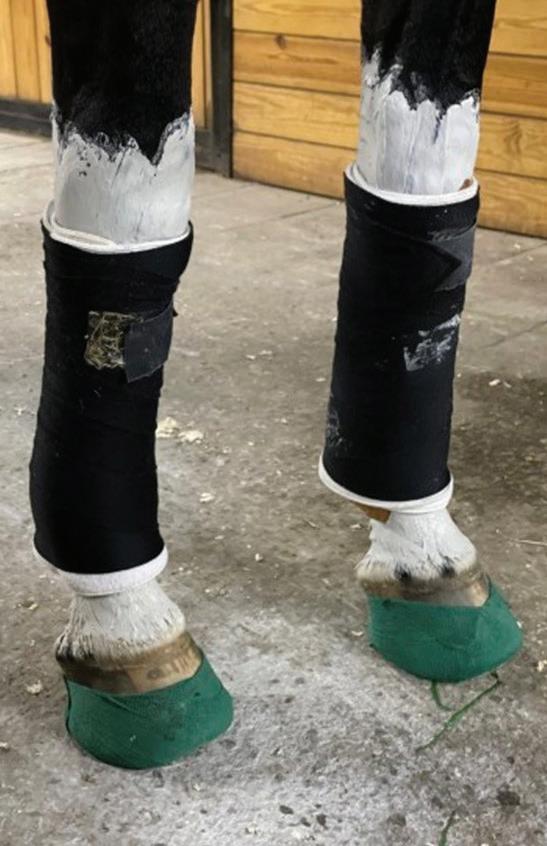
• Cooled (stored in the fridge) for use as a preventative therapy for tendons, ligaments, joints, and muscles before or after exercise
• Alternating warm and cool temperature poultices
• Spread on thickly to cover from the
knees/hocks to the fetlocks, encasing the tendons and ligaments of the lower legs, after a competition or long day on the trailer
• Part of a sweat bandage where the poultice is applied to the leg, covered with lightweight plastic wrap, then bandaged over top to prevent or reduce limb swelling
• Packed onto a hoof abscess to soften the area and encourage drainage
It is always recommended that you speak with your veterinarian for advice before applying a liniment or poultice, and to patch test any new product on a small area before applying on the horse’s entire body. Some general differences between liniments and poultices to keep in mind include:
Liniments – opt for a liniment to jumpstart your horse’s circulation and for chronic stiffness. You can apply these after a tough workout to help your horse feel better, more refreshed, or as a brace. Apply liniment over an area you know is particularly sore, but not over an inflamed area, wound, injury or for lameness.
Poultices – veterinarians may recommend a poultice for an acute injury, such as a horse having a big, warm and swollen leg, to draw out the heat and swelling. Or, they can be used on the feet such as packing a hoof if you have a bruise or abscess.


Have you ever wondered if you have the correct size horse bit or stared at the size options for the bit you’re about to order, hoping you are picking the right one? Stop guessing and learn easy ways to measure your horse for a bit size and assess it’s fit in your horse’s mouth.
Metal bits are thought to have been developed and used in riding sometime between 1300 and 1200 BC. Other materials, such as bone and wood, may have been used before that time, but non-metal materials were not as durable.
Selecting the correct horse bit size can significantly impact the effectiveness and your horse’s comfort. A bit that’s too- small can pinch and cause rubs on the tongue or cheeks, and a bits that’s
too- big can slide around in the mouth and be less effective.
Bits have several measurements:
• Length of the bit from one ring to the other is the main measure, displayed in inches or mm. Standard horse sizes include 5”, 5 ¼”, and 5 ½” (130mm, 135mm, 140mm.) Pony bits can run as small as 3”, and draft horses run as large as 7”.
• Mouthpiece thickness, typically 14mm to 18mm.
• Ring diameter or shank length.
You can use one of several options to measure your horse’s mouth. You can

measure the bit if you have a bit that you know fits well. Bits are measured from inside corner to inside corner, across the length of the horse’s mouth. An alternative option is using a measuring tool, such as a dowel, string, or soft measuring tape, and marking both ends where the lips end. Make sure whatever you start to measure sits approximately where the bit will sit. You can measure between the marks once you remove the dowel or string from the horse’s mouth. Use a measuring tape that shows inches and metric cm/mm, as bit measurements can be in both.
You can check for fit when the bit is attached to the bridle and in the horse’s mouth. Before checking the bit
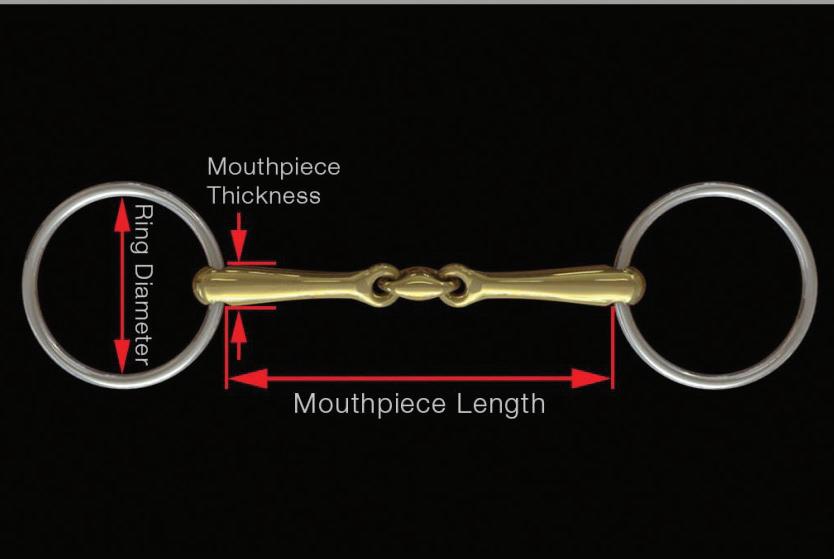
fit, ensure the bridle is adjusted so the bit is sitting at the right height in the horse’s mouth.
How should it look? For snaffle bits, you should see 1-2 wrinkles at the corner of the mouth and tension on the cheek pieces without solid pressure. You won’t see any wrinkles for curb bits, but the bit should be resting against the corners of the horse’s mouth and should not be low enough to touch or bang on the teeth.
Once the bit sits properly in the horse’s mouth, you can assess the width. Does it feel tight on the sides of the mouth, with little to no room to move the bit from side to side? If so, it may be too narrow.
Ideally, you want 1/8” to 1/4” of space on either side of the horse’s mouth, but this depends on how fleshy your horse’s lips are. Some horses have a lot of lip, so there will still be a lot of side-to-side movement, even if the lips touch the bit cheekpieces or rings. Other horses have very firm lips so that you can see the space.
If you can easily slide the bit back and forth with 1/2” or more showing on either side of the horse’s mouth and the rings or cheekpieces, your bit may be too wide.
Another measurement to assess is the thickness of the bit. This measurement is mainly seen in loose ring snaffles used in dressage, but thickness

can be a factor for any bit’s proper fit. Just like people, some horses have smaller mouths than others, making a thicker bit uncomfortable.
Generally speaking, larger diameter bits tend to be milder in their action than narrow diameter bits, but there is also a comfort factor for the horse. If your horse has a small mouth, a narrower diameter bit may fit better. The most common thickness is 16mm (approx. 5/8th of an inch), although there are large ranges. Most commonly seen are 14-18mm, with some bradoon bits designed for double bridles as narrow as 12mm.
Ring diameter or shank length are both aspects to consider with bits. Decisions here are more related to bit action and function, but a few fit factors exist. A horse with a narrow muzzle and a wide cheek may need a curved or flared cheek ring to keep it from poking into the horse’s cheek.
Some horses have sensitive lips, so a cheekpiece that isn’t smooth and fixed, like a D ring, full-cheek, eggbutt snaffle, or fixed shank bits, could rub and create sores in the corners of the mouth. Bit sores are most common in bits with loose cheek attachments, such as loose-ring snaffles and nonfixed shank bits.
There are a wide range of mouthpieces, and each will sit differently in the horse’s mouth.
Deciding what mouthpiece to use is a training and riding preference, but you should also consider mouth conformation.
Horses with bigger tongues and low palates could find certain bits uncomfortable, such as thick-diameter bits or single-jointed snaffles. For those horses who need tongue clearance, a ported bit or double-jointed snaffle could provide more comfort.
Fitting a double bridle, which includes a snaffle bit, also known as a Bradoon, and a curb bit, or Weymouth, can be tricky as you need to ensure both bits fit comfortably in the horse’s mouth. The above guidelines apply, and it is important to ensure both bits are seated within the mouth so they are not too low and do not interfere.
Even the most well-fitting bit may not give you the results you are looking for, so consulting with your riding instructor, trainer, or clinician can help you determine the right type of bit to use for your unique horse. Your horse gets the final say on any new bit, and sometimes they have preferences that don’t follow the rules.


10 - 22, 2024
BUILT FORD TOUGH LIVESTOCK COMPLEX - TULSA, OK
FRIDAY, JUNE 7
8:00 am: Stall Barns Open
SATURDAY, JUNE 8
PAVILION
Youth Speech Contest - 9 am
SUNDAY, JUNE 9
FORD TRUCK ARENA
9 am : Youth Horse Judging Contest
EXHIBIT HALL
10 am: Church Service
12:30 pm: Ride the Pattern Clinics Showmanship Equitation Horsemanship
PAVILION ARENA PADDOCK
3 pm through the night: Ranch Trail Practice
MONDAY, JUNE 10
FORD TRUCK ARENA, 7:30 AM
1 PRELIM AM Jr W/T - English Showmanship, Horse
2 PRELIM AM Sr W/T - English Showmanship, Horse
3 PRELIM AM El W/T - English Showmanship, Horse
4 PRELIM AM Jr - English Showmanship, Solid Horse
5 PRELIM AM Sr/El - English Showmanship, Solid Horse
6 PRELIM AM Jr W/T - English Showmanship, Solid Horse
7 PRELIM AM Sr/El W/T - English Showmanship, Solid Horse
8 PRELIM AM Jr - English Showmanship, Horse
9 PRELIM AM Sr - English Showmanship, Horse
10 PRELIM AM Elite - English Showmanship, Horse
11 PRELIM AM Novice - English Showmanship, Horse
FINAL AM Jr W/T - English Showmanship, Horse
FINAL AM Sr W/T - English Showmanship, Horse
FINAL AM El W/T - English Showmanship, Horse
FINAL AM Jr - English Showmanship, Solid Horse
FINAL AM Sr/El - English Showmanship, Solid Horse
FINAL AM Jr W/T - English Showmanship, Solid Horse
FINAL AM Sr/El W/T - English Showmanship, Solid Horse
FINAL AM Jr - English Showmanship, Horse
FINAL AM Sr - English Showmanship, Horse
FINAL AM Elite - English Showmanship, Horse
FINAL AM Novice - English Showmanship, Horse
12 AM - Bareback Hunt Seat Equitation
13 AM - Bareback Hunt Seat Equitation, Solid
MUSTANG ARENA, 7:30 AM
14 PRELIM YA Jr - English Showmanship, Horse
15 PRELIM YA Sr - English Showmanship, Horse
16 YA Jr Novice - English Showmanship, Horse
17 YA Sr Novice - English Showmanship, Horse
18 YA Jr - English Showmanship, Solid Horse/Pony
19 YA Sr - English Showmanship, Solid Horse/Pony
20 PRELIM YA W/T, 11 - 18 yo - English
Showmanship, Horse/Pony
21 YA W/T, 11 - 18 yo - English Showmanship, Solid Horse/Pony
22 YA W/T, 10 & u - English Showmanship, Horse/Pony
23 YA W/T, 10 & u - English Showmanship, Solid Horse/Pony
FINAL YA Jr - English Showmanship, Horse
FINAL YA Sr - English Showmanship, Horse
FINAL YA W/T, 11 - 18 yo - English Showmanship, Horse/Pony
24 YA Jr - Bareback Hunt Seat Equitation, Horse/Pony
25 YA Sr - Bareback Hunt Seat Equitation, Horse/Pony
26 YA - Bareback Hunt Seat Equitation, Solid Horse/Pony Driving Practice after last class - 1 hour
PAVILION ARENA, 7:30 AM
27 OP - Ranch Trail, Jr. (NSBA)
28 OP - Ranch Trail, Sr. (NSBA)
29 OP - Ranch Trail, Jr. Solid (NSBA)
30 OP - Ranch Trail, Sr. Solid (NSBA)
31 AM - Ranch Trail (NSBA)
32 AM W/T - Ranch Trail
33 AM - Ranch Trail, Solid (NSBA)
34 AM W/T - Ranch Trail, Solid
35 YA - Ranch Trail, Horse/Pony (NSBA)
36 YA W/T 11 - 18 - Ranch Trail, Horse/Pony
37 YA - Ranch Trail, Solid Horse/Pony (NSBA)
38 YA W/T 11 - 18 - Ranch Trail, Solid Horse/Pony
39 YA - Ranch Horsemanship Horse/Pony
40 YA W/T 11 - 18 - Ranch Horsemanship Horse/Pony
41 YA - Ranch Horsemanship, Solid Horse/Pony
42 YA W/T 11 - 18 - Ranch Horsemanship, Solid Horse/Pony
43 AM - Ranch Horsemanship
44 AM W/T- Ranch Horsemanship
45 AM - Ranch Horsemanship, Solid
46 AM W/T- Ranch Horsemanship, Solid Ranch/Riding Reining practice in Pavilion after last classone hour
TUESDAY, JUNE 11
FORD TRUCK ARENA, 7:30 AM
47 PRELIM YA Jr - Hunt Seat Equitation, Horse/Pony
48 PRELIM YA Sr - Hunt Seat Equitation, Horse/Pony
49 YA Jr - Hunt Seat Equitation, Solid Horse/Pony
50 YA Sr - Hunt Seat Equitation, Solid Horse/Pony
51 PRELIM YA W/T, 11 - 18 yo - Hunt Seat Equitation, Horse/Pony
52 PRELIM YA W/T, 11 - 18 yo - Hunt Seat Equitation, Solid Horse/Pony
53 YA Leadline W/T, 8 & u - Hunt Seat Equitation
54 YA Leadline W/T, 8 & u - Hunt Seat Equitation, Solid
55 YA W/T, 10 & u - Hunt Seat Equitation, Horse/Pony
56 YA Novice - Hunt Seat Equitation, Solid Horse/Pony
57 YA W/T, 10 & u - Hunt Seat Equitation, Solid Horse/Pony
FINAL YA Jr - Hunt Seat Equitation, Horse/Pony
FINAL YA Sr - Hunt Seat Equitation, Horse/Pony
FINAL YA W/T, 11 - 18 yo - Hunt Seat Equitation, Horse/Pony
FINAL YA W/T, 11 - 18 yo - Hunt Seat Equitation, Solid Horse/Pony
58 YA Jr - Hunter Under Saddle, ST/HN Horse/Pony (NSBA)
59 YA Sr - Hunter Under Saddle, ST/HN Horse/Pony (NSBA)
60 YA - Hunter Under Saddle, PL/SD Horse/Pony
61 YA Jr - Hunter Under Saddle, Solid Horse/Pony (NSBA)
62 YA Sr - Hunter Under Saddle, Solid Horse/Pony (NSBA)
OP/AM Driving practice - after last class, 1 hour
MUSTANG ARENA, 7:30 AM
63 OP - Green Hunter Under Saddle, ST/HN Type
64 AM Jr W/T - English Pleasure
65 OP - Hunter Under Saddle, 2 year olds ST/HN Type (NSBA)
66 AM Sr W/T - English Pleasure
67 OP - Hunter Under Saddle, 5 & under, ST/HN Type (NSBA)
68 AM Elite W/T - English Pleasure
69 OP - Hunter Under Saddle, 3 year olds ST/HN Type, Solid (NSBA)
70 AM - Hunter Under Saddle PL/SD Type
71 OP - Hunter Under Saddle, 6 & over, ST/HN Type, Solid (NSBA)
72 AM Jr - Hunter Under Saddle ST/HN Type (NSBA)
73 AM Sr - Hunter Under Saddle ST/HN Type (NSBA)
74 AM Elite - Hunter Under Saddle ST/HN Type (NSBA)
75 AM Jr - Hunter Under Saddle, Solid (NSBA)
76 AM Sr/El - Hunter Under Saddle, Solid (NSBA)
77 AM Novice - Hunter Under Saddle
78 OP - English Pleasure, 5 & Under, ST/HN Type
79 OP - English Pleasure, 6 and Over, ST/HN Type
80 AM - English Pleasure, PL/SD Type
81 OP - Disciplined Rail Driving, Horse
82 AM - Disciplined Rail Driving, Horse
83 OP - Ideal Pinto Driving, Horse
84 AM - Ideal Pinto Driving, Horse
85 OP - Parade, Horse
YA Driving practice - after last class, 1 hour
PAVILION ARENA, 7:30 AM
86 OP - Ranch Riding, Jr. Horse (NSBA)
87 OP - Ranch Riding, Sr. Horse (NSBA)
88 OP - Ranch Riding, Jr. Solid (NSBA)
89 OP - Ranch Riding, Sr. Solid (NSBA)
90 AM - Ranch Riding (NSBA)
91 AM W/T- Ranch Riding
92 AM - Ranch Riding, Solid (NSBA)
93 AM W/T- Ranch Riding, Solid
94 YA - Ranch Riding Horse/Pony (NSBA)
95 YA W/T 11 - 18 - Ranch Riding Horse/Pony
96 YA - Ranch Riding, Solid Horse/Pony (NSBA)
97 YA W/T 11 - 18 - Ranch Riding, Solid Horse/Pony
98 OP - Ranch Reining
99 OP - Ranch Reining, Solid
100 AM - Ranch Reining
101 AM - Ranch Reining, Solid
102 YA - Ranch Reining Horse/Pony
103 YA - Ranch Reining, Solid Horse/Pony
WEDNESDAY, JUNE 12
FORD TRUCK ARENA, 7:30 AM
104 PRELIM AM Jr - Hunt Seat Equitation
105 PRELIM AM Sr - Hunt Seat Equitation
106 PRELIM AM Elite - Hunt Seat Equitation
107 PRELIM AM Novice - Hunt Seat Equitation
108 PRELIM AM Novice - Hunt Seat Equitation, Solid
109 AM Jr W/T - Hunt Seat Equitation
110 AM Sr W/T - Hunt Seat Equitation
111 AM El W/T - Hunt Seat Equitation
112 AM Jr - Hunt Seat Equitation, Solid
113 AM Sr/El - Hunt Seat Equitation, Solid
114 AM Jr W/T - Hunt Seat Equitation, Solid
115 AM Sr/El W/T - Hunt Seat Equitation, Solid
FINAL AM Jr - Hunt Seat Equitation
FINAL AM Sr - Hunt Seat Equitation
FINAL AM Elite - Hunt Seat Equitation
FINAL AM Novice - Hunt Seat Equitation
FINAL AM Novice - Hunt Seat Equitation, Solid
116 AM - Pleasure Driving, Horse
117 AM - Pleasure Driving, Horse, Solid
118 OP - Pleasure Driving, Horse
119 OP - Pleasure Driving, Horse, Solid
120 AM - Reinsmanship Driving Equitation, Horse
MUSTANG ARENA, 7:30 AM
121 YA Jr Novice - Hunt Seat Equitation, Horse/Pony
122 YA Sr Novice - Hunt Seat Equitation, Horse/Pony
123 YA W/T, 11 - 18 yo - English Pleasure, Horse/Pony
124 YA W/T, 11 - 18 yo - English Pleasure, Solid Horse/Pony
125 YA Jr - English Pleasure, ST/HN Type Horse/Pony
126 YA Sr - English Pleasure, ST/HN Type Horse/Pony
127 YA - English Pleasure, PL/SD Type Horse/Pony
128 YA Jr - English Pleasure, Solid Horse/Pony
129 YA Sr - English Pleasure, Solid Horse/Pony
130 YA Jr Novice - English Pleasure, Horse/Pony
131 YA Sr Novice - English Pleasure, Horse/Pony
132 YA Novice - English Pleasure, Solid Horse/Pony
133 YA W/T, 10 & u - English Pleasure, Horse/Pony
134 YA W/T, 10 & u - English Pleasure, Solid Horse/Pony
135 YA Leadline Walk/Trot, 8 & u - English Pleasure
136 YA Leadline Walk/Trot, 8 & u - English Pleasure, Solid
137 YA Jr - Disciplined Rail English, Horse/Pony
138 YA Sr - Disciplined Rail English, Horse/Pony
139 YA W/T, 11 - 18 yo - Disciplined Rail English, Horse/Pony
140 YA Walk/Trot, 11 - 18 yo - Disciplined Rail English, Solid Horse/Pony
141 YA - Disciplined Rail Driving, Horse/Pony
PAVILION ARENA, 7:30 AM
142 YA W/T 11- 18 - Ranch Showmanship Horse/Pony
143 YA - Ranch Showmanship Horse/Pony
144 YA W/T 11- 18 - Ranch Showmanship, Solid Horse/Pony
145 YA - Ranch Showmanship, Solid Horse/Pony
146 AM W/T - Ranch Showmanship Horse
147 AM - Ranch Showmanship Horse
148 AM - W/T Ranch Showmanship, Solid Horse
149 AM - Ranch Showmanship, Solid Horse
150 OP - Ranch Rail Pleasure, Jr. Horse (NSBA)
151 OP - Ranch Rail Pleasure, Sr. Horse (NSBA)
152 OP - Ranch Rail Pleasure, Jr. Solid Horse (NSBA)

153 OP - Ranch Rail Pleasure, Sr. Solid Horse (NSBA)
154 AM - Ranch Rail Pleasure (NSBA)
155 AM W/T - Ranch Rail Pleasure
156 AM - Ranch Rail Pleasure, Solid (NSBA)
157 AM W/T - Ranch Rail Pleasure, Solid
158 YA - Ranch Rail Pleasure Horse/Pony (NSBA)
159 YA W/T 11 - 18 - Ranch Rail Pleasure Horse/Pony
160 YA - Ranch Rail Pleasure, Solid Horse/Pony (NSBA)
161 YA W/T 11 - 18 - Ranch Rail Pleasure, Solid Horse/Pony
THURSDAY, JUNE 13
FORD TRUCK ARENA, 7:30 AM
162 YA Jr - Disciplined Rail English, Solid Horse/Pony
163 YA Sr - Disciplined Rail English, Solid Horse/Pony
164 YA Jr Novice - Disciplined Rail English, Horse/ Pony
165 YA Sr Novice - Disciplined Rail English, Horse/ Pony
166 YA Jr - Ideal Pinto English, Horse/Pony
167 YA Sr - Ideal Pinto English, Horse/Pony
168 YA Jr - Ideal Pinto English, Solid Horse/Pony
169 YA Sr - Ideal Pinto English, Solid Horse/Pony
170 YA Jr Novice - Ideal Pinto English, Horse/Pony
171 YA Sr Novice - Ideal Pinto English, Horse/Pony
172 YA W/T, 11 - 18 yo - Ideal Pinto English, Horse/ Pony
173 YA W/T, 11 - 18 yo - Ideal Pinto English, Solid Horse/Pony
174 AM Jr - English Pleasure, Solid
175 AM Sr/El - English Pleasure, Solid
176 AM Novice - English Pleasure, Solid
177 AM Jr W/T - English Pleasure, Solid
178 AM Sr/El W/T - English Pleasure, Solid
179 OP - Disciplined Rail English, ST/HN Type Solid Horse
180 AM Jr - Disciplined Rail English, Solid
181 AM Sr/El - Disciplined Rail English, Solid
182 AM Jr W/T - Disciplined Rail English, Solid
183 AM Sr/El Walk/Trot - Disciplined Rail English, Solid
MUSTANG ARENA, 7:30 AM
184 OP - Hunter Under Saddle, 2 year olds, ST/HN Type Solid (NSBA)
185 OP - Green Hunter Under Saddle, Solid, ST/HN Type
186 OP - Hunter Under Saddle, 5 & Under, ST/HN Type Solid (NSBA)
187 OP - Hunter Under Saddle, 3 year olds, ST/HN Type (NSBA)
188 OP - Hunter Under Saddle, 6 & Over, ST/HN Type (NSBA)
189 OP - English Pleasure, ST/HN Type, Solid
190 OP - English Pleasure, HN/SD Seat, PL/SD Type
191 OP - English Pleasure, HN/SD Seat, PL/SD Type, Solid
192 AM Jr W/T - Disciplined Rail English
193 AM Sr W/T- Disciplined Rail English
194 AM El W/T - Disciplined Rail English
195 AM Novice - Disciplined Rail English
196 AM Jr - English Pleasure, ST/HN Type
197 AM Sr - English Pleasure, ST/HN Type
198 AM El - English Pleasure, ST/HN Type
199 AM Novice - English Pleasure
200 OP - Show Hack, Horse
201 OP - Disciplined Rail English, ST/HN Type
202 AM Jr - Disciplined Rail English
203 AM Sr - Disciplined Rail English
204 AM Elite - Disciplined Rail English
205 OP - Disciplined Rail English, PL/SD Type
206 OP - Disciplined Rail English, PL/SD Type, Solid AM/OP
PL/SD Halter practice - after last class, 1 hour YA Driving practice - 1 hour, after halter practice
PAVILION ARENA, 7:30 AM
207 OP - Ranch Ideal Pinto, Jr. Horse
208 OP - Ranch Ideal Pinto, Sr. Horse
209 OP - Ranch Ideal Pinto, Jr. Solid
210 OP - Ranch Ideal Pinto, Sr. Solid
211 AM - Ranch Ideal Pinto
212 AM W/T- Ranch Ideal Pinto
213 AM - Ranch Ideal Pinto, Solid
214 AM W/T- Ranch Ideal Pinto Solid
215 YA - Ranch Ideal Pinto, Horse/Pony
216 YA W/T 11 - 18 - Ranch Ideal Pinto, Horse/Pony
217 YA - Ranch Ideal Pinto, Solid Horse/Pony
218 YA W/T 11 - 18 - Ranch Ideal Pinto Solid, Horse/Pony
219 OP - Ranch Conformation, Jr. Horse
220 OP - Ranch Conformation, Sr. Horse
221 OP - Ranch Conformation, Jr. Solid
222 OP - Ranch Conformation, Sr. Solid
223 AM - Ranch Conformation
224 AM - Ranch Conformation, Solid
225 YA - Ranch Conformation, Horse/Pony
226 YA - Ranch Conformation, Solid Horse/Pony
Ranch High Point Awards in PAVILION ARENA after classes finish English and Leadline
Trail Practice after last class in Pavilion Paddock - through night
FRIDAY, JUNE 14
FORD TRUCK ARENA, 7:30 AM
Over Fences walk through/warm up - 4:00 am - 6:30 am
227 OP - Green Working Hunter Over Fences
228 OP - Working Hunter Over Fences, Solid (NSBA)
229 AM - Working Hunter Over Fences (NSBA)
230 AM - Working Hunter Over Fences, Solid (NSBA)
231 OP - Working Hunter Over Fences (NSBA)
232 AM - Equitation Over Fences
233 OP - Jumping
234 AM Novice - Hunter Hack
235 YA Novice - Hunter Hack, Horse/Pony
236 OP - Hunter Hack (NSBA)
237 OP - Hunter Hack, Solid (NSBA)
238 AM - Hunter Hack (NSBA)
239 AM - Hunter Hack, Solid (NSBA)
240 YA - Hunter Hack, Horse/Pony (NSBA)
241 YA - Hunter Hack, Solid Horse/Pony (NSBA) Dressage Practice for 2 hours after last class
Western Dressage Practice for 2 hours after Dressage practice
MUSTANG ARENA, 7:30 AM
242 AM - Halter Mares, PL/SD Type Horse
243 AM - Halter Gelding/Stallion, PL/SD Type Horse
244 AM - Halter, PL/SD Type, Solid Horse
245 OP - Halter Mares, PL/SD Type Horse
246 OP - Halter Gelding/Stallion, PL/SD Type Horse
247 OP - Halter, PL/SD Type, Solid Horse
248 AM - Tobiano Color, PL/SD Type Horse
249 AM - Overo Color, PL/SD Type Horse
250 OP - Overo Color, PL/SD Type Horse
251 OP - Tobiano Color, PL/SD Type Horse
252 OP - Ideal Pinto English, ST/HN Type Solid
253 AM Jr - Ideal Pinto English, Solid
254 AM Sr/El - Ideal Pinto English, Solid
255 AM Jr W/T - Ideal Pinto English, Solid
256 AM Sr/El W/T - Ideal Pinto English, Solid
257 OP - Side Saddle, Horse
258 AM Jr W/T - Ideal Pinto English
259 AM Sr W/T - Ideal Pinto English
260 AM El W/T - Ideal Pinto English
261 OP - Ideal Pinto English, ST/HN Type, Overo
262 OP - Ideal Pinto English, ST/HN Type, Tobiano
263 AM Jr - Ideal Pinto English
264 AM Sr - Ideal Pinto English
265 AM Elite - Ideal Pinto English
266 AM Novice - Ideal Pinto English
267 OP - Ideal Pinto English, HN/SD Seat, PL/SD Type
268 OP - Ideal Pinto English, HN/SD Seat, PL/SD Type, Solid
269 YA - Pleasure Driving, Horse
270 YA - Reinsmanship Driving Equitation, Horse Gymkhana Practice for 2 hrs after last class
PAVILION ARENA, 7:30 AM
271 YA Leadline Walk/Trot, 8 & u - Trail
272 YA Leadline Walk/Trot, 8 & u - Trail, Solid
273 YA Jr - Trail, English, Horse/Pony
274 YA Sr - Trail, English, Horse/Pony
275 YA - Trail, English, Solid Horse/Pony
276 AM Jr - Trail, English
277 AM Sr - Trail, English
278 AM Elite - Trail, English
279 AM - Trail, English, Solid
280 OP - Trail, English
281 OP - Trail, English, Solid Youth Trail Practice after last class in Pavilion Paddockthrough the night
SATURDAY, JUNE 15
FORD TRUCK ARENA, 7:30 AM
282 AM - Dressage, Training Level Test 1, Horse
283 AM - Dressage, Training Level Test 1, Solid, Horse
284 OP - Dressage, Training Level Test 2, Horse
285 OP - Dressage, Training Level Test 2, Solid, Horse
286 AM - Dressage, First Level Test 2, Horse
287 AM - Dressage, First Level Test 3, Solid, Horse
288 OP - Dressage, First Level Test 3, Horse
289 OP - Dressage, First Level Test 2, Solid, Horse
290 AM - Western Dressage, WDAA Intro Level Test 1, Horse
291 AM - Western Dressage, WDAA Intro Level Test 1, Solid, Horse
292 OP - Western Dressage, WDAA Intro Level Test 3, Horse
293 OP - Western Dressage, WDAA Intro Level Test 3, Solid, Horse
294 AM - Western Dressage, WDAA Basic Test 1, Horse
295 AM - Western Dressage, WDAA Basic Test 1, Solid, Horse
296 OP - Western Dressage, WDAA Basic Test 3, Horse
297 OP - Western Dressage, WDAA Basic Test 3, Solid, Horse
298 OP - Western Dressage, WDAA Level 1, Test 2, Horse
299 OP - Western Dressage, WDAA Level 1, Test 2, Solid, Horse
YA Halter practice after last class - 1 hour
MUSTANG ARENA, 7:30 AM
300 OP - Barrel Racing
301 OP - Barrel Racing, Solid
302 AM - Barrel Racing
303 AM - Barrel Racing, Solid
304 YA Jr - Barrel Racing, Horse/Pony

305 YA Sr - Barrel Racing, Horse/Pony
306 YA Jr - Barrel Racing, Solid Horse/Pony
307 YA Sr - Barrel Racing, Solid Horse/Pony
308 YA W/T, 10 & u - Barrel Racing, Horse/Pony
309 YA W/T, 10 & u - Barrel Racing, Solid Horse/Pony
310 OP - Pole Bending
311 OP - Pole Bending, Solid
312 AM - Pole Bending
313 AM - Pole Bending, Solid
314 YA Jr - Pole Bending, Horse/Pony
315 YA Sr - Pole Bending, Horse/Pony
316 YA Jr - Pole Bending, Solid Horse/Pony
317 YA Sr - Pole Bending, Solid Horse/Pony
318 YA W/T, 10 & u - Pole Bending, Horse/Pony
319 YA W/T, 10 & u - Pole Bending, Solid Horse/Pony
320 OP - Stake Race
321 OP - Stake Race, Solid
322 AM - Stake Race
323 AM - Stake Race, Solid
324 YA Jr - Stake Race, Horse/Pony
325 YA Sr - Stake Race, Horse/Pony
326 YA Jr - Stake Race, Solid Horse/Pony
327 YA Sr - Stake Race, Solid Horse/Pony
328 YA W/T, 10 & u - Stake Race, Horse/Pony
329 YA W/T, 10 & u - Stake Race, Solid Horse/Pony
330 OP - Keyhole Race
331 OP - Keyhole Race, Solid
332 AM - Keyhole Race
333 AM - Keyhole Race, Solid
334 YA Jr - Keyhole Race, Horse/Pony
335 YA Sr - Keyhole Race, Horse/Pony
336 YA Jr - Keyhole Race, Solid Horse/Pony
337 YA Sr - Keyhole Race, Solid Horse/Pony
338 YA W/T, 10 & u - Keyhole Race, Horse/Pony
339 YA W/T, 10 & u - Keyhole Race, Solid Horse/Pony
340 YA Jr - Western Riding, Horse/Pony (NSBA)
341 YA Sr - Western Riding, Horse/Pony (NSBA)
342 YA - Western Riding, Solid Horse/Pony (NSBA)
Gymkhana High Points after last class
OP/AM Halter/Longe Line practice after High Points - 1 hour
PAVILION ARENA, 7:30 AM
343 YA Jr - Trail - Western, Horse/Pony (NSBA)
344 YA Sr - Trail - Western, Horse/Pony (NSBA)
345 YA Jr Novice - Trail, Horse/Pony
346 YA Sr Novice - Trail, Horse/Pony
347 YA Jr - Trail - Western, Solid Horse/Pony (NSBA)
348 YA Sr - Trail - Western, Solid Horse/Pony (NSBA)
349 YA Novice - Trail - Western, Solid Horse/Pony
350 YA W/T, 11 - 18 yo - Trail, Western, Horse/Pony
351 YA W/T, 11 - 18 yo - Trail, Western, Solid Horse/Pony
352 YA W/T, 10 & u - Trail, Western, Horse/Pony
353 YA W/T, 10 & u - Trail, Western, Solid Horse/Pony
OP&AM Trail Practice after last class in Pavilion Paddockthrough the night
SUNDAY, JUNE 16
FORD TRUCK ARENA, 7:30 AM
354 YA - Halter Mares/Geldings, Solid PL/SD Type Horse/Pony
355 YA W/T, 10 & u - Halter Geldings, Horse
356 YA W/T, 10 & u - Halter Mares, Horse
357 YA - Halter Mares, Solid ST/HN Type Horse/Pony
358 YA - Performance Halter Mares, Solid Horse/Pony
359 YA W/T, 10 & u - Halter Geldings, Solid, Horse/Pony
360 YA - Halter Geldings, Solid ST/HN Type Horse/Pony
361 YA - Performance Halter Geldings, Solid Horse/Pony
362 YA W/T, 10 & u - Halter Mares, Solid Horse/Pony
363 YA - Halter Mares, HN Type Horse
364 YA - Halter Geldings, HN Type Horse
365 YA - Halter, PL/SD Type Horse
366 YA - Halter Geldings, ST Type Horse, 2 & under
367 YA - Halter Geldings, ST Type Horse, 3 & older
368 YA - Performance Halter Geldings, Horse/Pony
369 YA - Halter Mares, ST Type Horse, 2 & under
370 YA - Halter Mares, ST Type Horse, 3 & older
371 YA - Performance Halter Mare, Horse/Pony
372 YA - Tobiano Color, Horse
373 YA - Overo Color, Horse
374 YA Leadline W/T, 8 & u - Western Pleasure
375 YA Leadline W/T, 8 & u - Western Pleasure, Solid
376 YA Leadline Walk Only, 8 & u Girls Western Pleasure
377 YA Leadline Walk Only, 8 & u Boys Western Pleasure
378 YA Leadline Walk Only, 8 & u - Western Pleasure, Solid
379 YA W/T, 11 - 18 yo - Ideal Pinto Western, Horse/Pony
380 YA W/T, 11 - 18 yo - Ideal Pinto Western, Solid Horse/Pony
381 YA Jr Novice - Ideal Pinto Western, Horse/Pony
382 YA Sr Novice - Ideal Pinto Western, Horse/Pony
383 YA Jr - Ideal Pinto Western, Solid Horse/Pony
384 YA Sr - Ideal Pinto Western, Solid Horse/Pony
AM Halter/Longe Line practice after last class - 1 hour
MUSTANG ARENA, 7:30 AM
Please contact Yellow Rose Futurity for entry into their classes
385 Yellow Rose Non Pro Yearling Mares – All Breeds
386 Yellow Rose Non Pro Two Year Old Mares –All Breeds
387 Yellow Rose Non Pro Yearling Geldings –All Breeds
388 Yellow Rose Non Pro Two Year Old Geldings –All Breeds
389 Yellow Rose Non Pro Yearling Stallions –All Breeds
390 Yellow Rose Non Pro Two & Over Stallions –All Breeds
391 Yellow Rose Non Pro Three & Over Mares –All Breeds
392 Yellow Rose Non Pro Three & Over Geldings –All Breeds
393 AM - Performance Halter Stallion, Horse
394 AM - Performance Halter Geldings, Jr. Horse, Yearling & 2 yo
395 AM - Performance Halter Geldings, Sr. Horse, 3 & over
396 AM - Performance Halter Mares, Jr. Horse, Yearling & 2 yo
397 AM - Performance Halter Mares, Sr. Horse, 3 & over
398 OP - Performance Halter Stallion Horse
399 OP - Performance Halter Gelding, Yearling & 2 yo Horse
400 OP - Performance Halter Gelding, 3 & over Horse
401 OP - Performance Halter Mare, Yearling & 2 yo Horse
402 OP - Performance Halter Mare, 3 & over Horse
403 AM - Yearling Longe Line, Hunter Type, Solid Horse (NSBA)
404 AM - Yearling Longe Line, Hunter Type, Horse (NSBA)
405 OP - Halter Mares, Solid HN Type Horse
406 OP - Halter Geldings/Stallions, Solid HN Type Horse
407 OP - Yearling Longe Line, Hunter Type, Solid Horse (NSBA)
408 OP - Yearling Longe Line, Hunter Type Horse (NSBA)
409 OP - Halter Mares, HN Type Horse, 2 & Under
410 OP - Halter Mares, HN Type Horse, 3 & Over
411 OP - Halter Stallion/Gelding, HN Type Horse, 2 & Under
412 OP - Halter Stallion/Gelding, HN Type Horse, 3-4-5 Yr Old
413 OP - Halter Stallion/Gelding, HN Type Horse, 6 & Over
PAVILION ARENA, 7:30 AM
414 OP - Green Trail - Western
415 OP - Green Trail, Western - Solid
416 AM Jr- Trail - Western - Solid (NSBA)
417 AM Sr/El - Trail - Western - Solid (NSBA)
418 OP - Trail-Western, 5 & Under (NSBA)
419 OP - Trail-Western, 6 & Over (NSBA)
420 OP - Trail - Western, 5 & Under, Solid (NSBA)
421 OP - Trail - Western, 6 & Over, Solid (NSBA)
AM Trail Practice after last class in Pavilion Paddockthrough the night
MONDAY, JUNE 17
FORD TRUCK ARENA, 7:30 AM
422 AM - Halter 2 & under Mares, HN Type Horse
423 AM - Halter 3 & over Mares, HN Type Horse
424 AM - Halter 2 & under Stallions/Geldings, HN Type Horse
425 AM - Halter 3 & over Stallions/Geldings, HN Type Horse
426 AM - Halter Mares, Solid ST/HN Type Horse, 2 & under
427 AM - Halter Mares, Solid ST/HN Type Horse, 3 & over
428 AM - Performance Halter Mares, Solid Horse, Yearling & 2 yo
429 AM - Performance Halter Mares, Solid Horse, 3 yo & older
430 AM - Halter Geldings, Solid ST/HN Type Horse, 2 & under
431 AM - Halter Geldings, Solid ST/HN Type Horse, 3 & over
432 AM - Performance Halter Geldings, Solid Horse, Yearling & 2 yo
433 AM - Performance Halter Geldings, Solid Horse, 3 yo & older
434 AM - Halter Stallions, Solid ST/HN Type Horse, 2 & under
435 AM - Halter Stallions, Solid ST/HN Type Horse, 3 & over
436 AM - Performance Halter Stallions, Solid Horse
437 AM - Yearling Longe Line, Stock Type, Solid Horse (NSBA)
438 AM - Two-Year Old Longe Line, ST/HN Type, Solid Horse (NSBA)
439 AM - Halter Mares, ST Type Horse, Weanling/Yearling
440 AM - Halter Mares, ST Type Horse, 2 Year Old
441 AM - Halter Mares, ST Type Horse, 3 & 4 Year Old
442 AM - Halter Mares, ST Type Horse, 5 Year & Older
443 AM - Halter Geldings, ST Type Horse, Weanling/Yearling
444 AM - Halter Geldings, ST Type Horse, 2 Year Old
445 AM - Halter Geldings, ST Type Horse, 3 & 4 Year Old
446 AM - Halter Geldings, ST Type Horse, 5 Year & Older
447 AM - Halter Stallions, ST Type Horse, 2 & under
448 AM - Halter Stallions, ST Type Horse, 3 & over
449 AM - Yearling Longe Line, Stock Type, Horse (NSBA)

450 AM - Two-Year old Longe Line, ST/HN Type, Horse (NSBA)
OP/Halter/Longe Line practice after last class - 1 hour
MUSTANG ARENA, 7:30 AM
451 YA W/T, 11 - 18 yo - Western Showmanship, Solid Horse/Pony
452 YA W/T, 10 & u - Western Showmanship, Solid Horse/Pony
453 YA Leadline W/T, 8 & u - Western Showmanship
454 YA Leadline W/T, 8 & u - Western Showmanship, Solid
455 YA Jr - Western Showmanship, Solid Horse/Pony
456 YA Sr - Western Showmanship, Solid Horse/Pony
457 YA Novice - Western Showmanship, Solid Horse/Pony
458 OP - Western Pleasure, 6 & Over, ST/HN Type (NSBA)
459 OP - Western Pleasure, 5 & U, ST/HN Type (NSBA)
460 OP - Green Western Riding
461 OP - Western Riding, Solid (NSBA)
462 OP - Western Riding (NSBA)
463 AM - Western Riding, Solid (NSBA)
464 AM - Western Riding (NSBA)
465 AM Jr W/T - Western Pleasure, Solid
466 AM Sr/El W/T - Western Pleasure, Solid
467 AM Jr W/T - Western Pleasure
468 AM Sr W/T - Western Pleasure
469 AM El W/T - Western Pleasure
PAVILION ARENA, 7:30 AM
470 AM Jr W/T - Trail
471 AM Sr W/T - Trail
472 AM El W/T - Trail
473 AM Jr W/T - Trail, Solid
474 AM Sr/El W/T - Trail, Solid
475 AM Novice - Trail, Solid
476 PRELIM YA Jr - Western Showmanship, Horse
477 PRELIM YA Sr - Western Showmanship, Horse
478 YA Jr Novice - Western Showmanship, Horse/Pony
479 YA Sr Novice - Western Showmanship, Horse/Pony
480 PRELIM YA W/T, 11 - 18 yo - Western Showmanship, Horse/Pony
481 PRELIM YA W/T, 10 & u - Western Showmanship, Horse/Pony
FINAL YA Jr - Western Showmanship, Horse
FINAL YA Sr - Western Showmanship, Horse
FINAL YA W/T, 11 - 18 yo - Western Showmanship, Horse/Pony
FINAL YA W/T, 10 & u - Western Showmanship, Horse/Pony
Mini/Pony In Hand
Trail Practice after last class in Pavilion Paddock -2 hours
AM Trail Practice after Pony/Minis in Pavilion Paddock through night
TUESDAY, JUNE 18
FORD TRUCK ARENA, 7:30 AM
482 OP - Halter Mares, ST Type Horse, Weanling/Yearling
483 OP - Halter Mares, ST Type Horse, 2 Yr Old
484 OP - Halter Mares, ST Type Horse, 3 & 4 Yr Old
485 OP - Halter Mares, ST Type Horse, 5 & Over
486 OP - Halter Geldings, ST Type Horse, Weanling/Yearling
487 OP - Halter Geldings, ST Type Horse, 2 Yr Old
488 OP - Halter Geldings, ST Type Horse, 3 & 4 Yr Old
489 OP - Halter Geldings, ST Type Horse, 5 & Over
490 OP - Halter Stallions, ST Type Horse, Weanling/Yearling
491 OP - Halter Stallions, ST Type Horse, 2 Yr Old
492 OP - Halter Stallions, ST Type Horse, 3 & Over
493 OP - Yearling Longe Line, Stock Type Horse (NSBA)
494 OP - Two Year Old Longe Line, ST/HN Type (NSBA)
495 OP - Halter Mares, Solid ST Type Horse, Weanling/Yearling
496 OP - Halter Mares, Solid ST Type Horse, 2 Year Old
497 OP - Halter Mares, Solid ST Type Horse, 3 Year Old
498 OP - Halter Mares, Solid ST Type Horse, 4 Years & Over
499 OP - Performance Halter Mares, Solid Horse, Yearling & 2 yo
500 OP - Performance Halter Mares, Solid Horse, 3 & over
501 OP - Halter Geldings, Solid ST Type Horse, 2 & under
502 OP - Halter Geldings, Solid ST Type Horse, 3 & over
503 OP - Performance Halter Geldings, Solid Horse, Yearling & 2 yo
504 OP - Performance Halter Geldings, Solid Horse, 3 & over
505 OP - Halter Stallions, Solid ST Type Horse, 2 & under
506 OP - Halter Stallions, Solid ST Type Horse, 3 & over
507 OP - Performance Halter Stallions, Solid Horse
508 OP - Yearling Longe Line, Stock Type, Solid Horse (NSBA)
509 OP - Two Year Old Longe Line, ST/HN Type, Solid (NSBA)
MUSTANG ARENA, 7:30 AM
510 YA Walk/Trot, 11 - 18 yo - Disciplined Rail Western, Horse/Pony
511 YA Walk/Trot, 11 - 18 yo - Disciplined Rail Western, Solid Horse/Pony
512 YA Jr - Disciplined Rail Western, Horse/Pony
513 YA Sr - Disciplined Rail Western, Horse/Pony
514 YA Jr - Disciplined Rail Western, Solid Horse/Pony
515 YA Sr - Disciplined Rail Western, Solid Horse/Pony
516 YA Jr Novice - Disciplined Rail Western, Horse/Pony
517 YA Sr Novice - Disciplined Rail Western, Horse/Pony
518 YA W/T, 11 - 18 yo - Western Pleasure, Horse/Pony
519 YA W/T, 11 - 18 yo - Western Pleasure, Solid Horse/Pony
520 YA W/T, 10 & u - Western Pleasure, Horse/Pony
521 YA W/T, 10 & u - Western Pleasure, Solid Horse/Pony
522 YA Jr - Ideal Pinto Western, Horse/Pony
523 YA Sr - Ideal Pinto Western, Horse/Pony
524 PRELIM YA W/T, 11 - 18 yo - Western Horsemanship, Horse/Pony
525 PRELIM YA W/T, 11 - 18 yo - Western Horsemanship, Solid Horse/Pony
526 PRELIM YA W/T, 10 & u - Western Horsemanship, Horse/Pony
527 YA W/T, 10 & u - Western Horsemanship, Solid Horse/Pony
528 YA Leadline W/T, 8 & u - Western Horsemanship
529 YA Leadline W/T, 8 & u - Western Horsemanship, Solid
FINAL YA W/T, 11 - 18 yo - Western Horsemanship, Horse/Pony
FINAL YA W/T, 11 - 18 yo - Western Horsemanship, Solid Horse/Pony
FINAL YA W/T, 10 & u - Western Horsemanship, Horse/Pony
High Point Awards in MUSTANG ARENA after all youth classes finish
YA Leadline W/T 8 & u, YA Leadline W/T Solid 8 &u, YA W/T 10 & u Solid Horse, YA W/T 10 & u, YA W/T 11-18 yo, YA W/T 11-18 yo Solid Horse/Pony
PAVILION ARENA, 7:30 AM
530 AM Elite - Trail - Western, (NSBA)
531 AM Sr - Trail - Western, (NSBA)
532 AM Jr - Trail - Western, (NSBA)
533 AM Novice - Trail
534 OP - Trail In-Hand, Miniature
535 OP - Trail In-Hand, B Mini
536 OP - Trail In-Hand, Solid Miniature/B Mini
537 AM - Trail In-Hand, Miniature/B Miniature
538 YA - Trail In-Hand, Miniature/B Miniature
539 OP - Trail In-Hand, Pony
540 AM - Trail In-Hand, Pony
541 YA - Trail In-Hand, Pony
542 OP - Roadster, Miniature
543 OP - Roadster, B Mini
544 OP - Roadster, Pony
Pony/Mini Driving Practice after last class in Pavilion 1 hour Yrlg/2 yo In Hand
Trail Practice after last class in Pavilion Paddock through night
WEDNESDAY, JUNE 19
FORD TRUCK ARENA, 7:30 AM
545 PRELIM YA - Bareback Western Horsemanship, Solid Horse/Pony
546 PRELIM YA Jr - Bareback Western Horsemanship, Horse/Pony
547 PRELIM YA Sr - Bareback Western Horsemanship, Horse/Pony
FINAL YA - Bareback Western Horsemanship, Solid Horse/Pony
FINAL YA Jr - Bareback Western Horsemanship, Horse/Pony
FINAL YA Sr - Bareback Western Horsemanship, Horse/Pony
548 YA Jr - Western Horsemanship, Solid Horse/Pony
549 YA Sr - Western Horsemanship, Solid Horse/Pony
550 YA Novice - Western Horsemanship, Solid Horse/Pony
551 PRELIM YA Jr - Western Horsemanship, Horse/Pony
552 PRELIM YA Sr - Western Horsemanship, Horse/Pony
553 YA Jr Novice - Western Horsemanship, Horse/Pony
554 YA Sr Novice - Western Horsemanship, Horse/Pony
FINAL YA Jr - Western Horsemanship, Horse/Pony
FINAL YA Sr - Western Horsemanship, Horse/Pony
555 YA - Western Pleasure, PL/SD Type Horse/Pony
556 YA Jr - Western Pleasure, Solid Horse/Pony (NSBA)
557 YA Sr - Western Pleasure, Solid Horse/Pony (NSBA)
558 YA Novice - Western Pleasure, Solid Horse/Pony
559 YA Jr - Western Pleasure, ST/HN Type Horse/ Pony, (NSBA)
560 YA Sr - Western Pleasure, ST/HN Type Horse/ Pony, (NSBA)
561 YA Jr Novice - Western Pleasure, Horse/Pony
562 YA Sr Novice - Western Pleasure, Horse/Pony
563 OP - Driving Barrels, Miniatures/B Miniatures High Point Awards in FORD TRUCK ARENA after all classes finish
YA Jr Solid Horse/Pony, YA Sr Solid Horse/Pony, YA Jr ST/ HN Horse/Pony, YA Sr ST/ HN Horse/Pony, YA PL/SD Horse, YA Jr Novice, YA Sr Novice, YA Solid Novice, OP/PL/SD Solid Horse, OP PL Horse, OP SD Horse

MUSTANG ARENA, 7:30 AM
564 AM - Tobiano Color, ST/HN Type Horse
565 AM - Overo Color, ST/HN Type Horse
566 OP - Overo Color, ST Type Horse
567 OP - Overo Color, HN Type Horse
568 OP - Tobiano Color, ST Type Horse
569 OP - Tobiano Color, HN Type Horse
570 AM - Bareback Western Horsemanship
571 AM - Bareback Western Horsemanship, Solid
572 OP - Disciplined Rail Western, PL/SD Type
573 OP - Disciplined Rail Western, PL/SD Type, Solid
574 OP - Western Pleasure, 2 Year Old, ST/HN Type Solid (NSBA)
575 OP - Western Pleasure, 3 Year Old, ST/HN Type Solid (NSBA)
576 AM Jr - Western Pleasure, ST/HN Type, 5 & Under (NSBA)
577 AM Sr - Western Pleasure, ST/HN Type, 5 & Under (NSBA)
578 AM Elite - Western Pleasure, ST/HN Type, 5 & Under (NSBA)
579 OP - Western Pleasure, PL/SD Type, Solid
580 OP - Western Pleasure, PL/SD Type
581 OP - Western Pleasure, 2 year olds, ST/HN Type (NSBA)
582 OP - Western Pleasure, 3 year olds, ST/HN Type (NSBA)
583 OP - Western Pleasure, 5 & Under, ST/HN Type, Solid (NSBA)
584 OP - Western Pleasure, 6 & Over, ST/HN Type, Solid (NSBA)
585 AM Jr - Western Pleasure, Solid (NSBA)
586 AM Sr/El - Western Pleasure, Solid (NSBA)
587 OP - Supreme Color Champion
PAVILION ARENA, 7:30 AM
588 AM - Yearling In Hand Trail, Horse
589 AM - Yearling In Hand Trail, Solid Horse
590 OP - Yearling In Hand Trail, Horse
591 OP - Yearling In Hand Trail, Solid Horse
592 AM - Two-Year old In Hand Trail, Horse
593 AM - Two-Year old In Hand Trail, Solid Horse
594 OP - Two-Year old In Hand Trail, Horse
595 OP - Two-Year old In Hand Trail, Solid Horse
596 AM - Color, Miniature/B Mini
597 YA - Color, Miniature/B Mini
598 OP - Color, Miniature
599 OP - Color, B Mini
600 OP - Tobiano Color, Pony
601 OP - Overo Color, Pony
602 AM - Color, Pony
603 YA - Color, Pony
604 OP - Disciplined Rail Driving, Pony
605 OP - Disciplined Rail Driving, Miniature
606 OP - Disciplined Rail Driving, B Mini
607 OP - Disciplined Rail Driving, Solid Miniature/ B Mini
608 YA - Disciplined Rail Driving, Mini/B Mini
609 AM - Disciplined Rail Driving, Mini/B Mini
610 AM - Disciplined Rail Driving, Pony
Pony/Mini Obstacle Driving Practice after last class in Pavilion Paddock - 1 hour
Mini/Pony Hunter In Hand/Jumping In Hand Practice after Obstacle Driving
THURSDAY, JUNE 20
FORD TRUCK ARENA, 7:30 AM
611 PRELIM AM Jr - Western Showmanship, Horse
612 PRELIM AM Elite - Western Showmanship, Horse
613 PRELIM AM Novice - Western Showmanship, Horse
FINAL AM Jr - Western Showmanship, Horse
FINAL AM Elite - Western Showmanship, Horse
FINAL AM Novice - Western Showmanship, Horse
614 PRELIM AM Jr - Western Horsemanship
615 PRELIM AM Sr - Western Horsemanship
616 PRELIM AM Elite - Western Horsemanship
617 PRELIM AM Novice - Western Horsemanship
FINAL AM Jr - Western Horsemanship
FINAL AM Sr - Western Horsemanship
FINAL AM Elite - Western Horsemanship
FINAL AM Novice - Western Horsemanship
618 OP - Driving Poles, Miniature, B Miniature
MUSTANG ARENA, 7:30 AM
619 PRELIM AM Sr - Western Showmanship, Horse
620 PRELIM AM Jr - Western Showmanship, Solid Horse
621 PRELIM AM Sr/El - Western Showmanship, Solid Horse
622 PRELIM AM Jr W/T - Western Showmanship, Solid Horse
623 PRELIM AM Sr/El W/T - Western Showmanship, Solid Horse
624 PRELIM AM Novice - Western Showmanship, Solid Horse
FINAL AM Sr - Western Showmanship, Horse
FINAL AM Jr - Western Showmanship, Solid Horse
FINAL AM Sr/El - Western Showmanship, Solid Horse
FINAL AM Jr W/T - Western Showmanship, Solid Horse
FINAL AM Sr/El W/T - Western Showmanship, Solid Horse
FINAL AM Novice - Western Showmanship, Solid
625 PRELIM AM Jr W/T - Western Horsemanship
626 PRELIM AM Sr W/T - Western Horsemanship
627 PRELIM AM El W/T - Western Horsemanship
628 PRELIM AM Novice - Western Horsemanship, Solid
FINAL AM Jr W/T - Western Horsemanship
FINAL AM Sr W/T - Western Horsemanship
FINAL AM El W/T - Western Horsemanship
FINAL AM Novice - Western Horsemanship, Solid
PAVILION ARENA, 7:30 AM
629 AM - English Showmanship, Pony/Mini/B Mini
630 YA - English Showmanship, Pony/Mini/B Mini
631 OP - Hunter Over Fences In-Hand, Miniature
632 AM - Hunter Over Fences In-Hand, Miniature/B Mini/Pony
633 YA - Hunter Over Fences In-Hand, Miniature/B Mini/Pony
634 OP - Hunter Over Fences In-Hand, B Mini
635 OP - Hunter Over Fences In-Hand, Solid Miniature/B Mini
636 OP - Hunter Over Fences In-Hand, Pony
637 OP - Jumping In-Hand, Miniature
638 OP - Jumping In-Hand, B Mini
639 OP - Jumping In-Hand, Solid Miniature/B Mini
640 OP - Jumping In-Hand, Pony
641 AM - Jumping In-Hand, Miniature/B Mini/Pony
642 YA - Jumping In-Hand, Miniature/B Mini/Pony
643 OP - Obstacle Driving, Miniature
644 OP - Obstacle Driving, B Mini
645 OP - Obstacle Driving, Solid Miniature/B Mini
646 YA - Obstacle Driving, Miniature/B Miniature
647 AM - Obstacle Driving, Miniature/B Miniature
648 AM - Obstacle Driving, Pony
649 OP - Obstacle Driving, Pony
650 YA - Pleasure Driving, Miniature/B Miniature
651 YA - Pleasure Driving, Pony
652 AM - Pleasure Driving, Miniature/B Miniature
653 AM - Pleasure Driving, Pony
654 OP - Country Pleasure Driving, Miniature
655 OP - Country Pleasure Driving, B Miniature
656 OP - Classic Pleasure Driving, Miniature
657 OP - Classic Pleasure Driving, B Miniature Pony/Mini Halter practice - after last class, 1 hour
FRIDAY, JUNE 21
FORD TRUCK ARENA, 7:30 AM
658 AM Novice - Western Pleasure, Solid
659 AM Novice - Western Pleasure
660 OP - Disciplined Rail Western, ST/HN Type
661 AM Jr - Disciplined Rail Western
662 AM Sr - Disciplined Rail Western
663 AM Elite - Disciplined Rail Western
664 AM Novice - Disciplined Rail Western
665 AM Jr - Western Pleasure, ST/HN Type, 6 & Over (NSBA)
666 AM Sr - Western Pleasure, ST/HN Type, 6 & Over (NSBA)
667 AM Elite - Western Pleasure, ST/HN Type, 6 & Over (NSBA)
668 AM - Western Pleasure, PL/SD Type
669 OP - Green Western Pleasure, ST/HN Type, Solid
670 OP - Green Western Pleasure, ST/HN Type
671 AM Jr W/T - Disciplined Rail Western
672 AM Sr W/T - Disciplined Rail Western
673 AM El W/T - Disciplined Rail Western
674 Shorty’s Hattery Charity Walk-Trot
675 OP - Driving Stakes, Miniature/B Miniature
High Point Awards in FORD TRUCK ARENA after classes finish: AM PL/SD
MUSTANG ARENA, 7:30 AM
676 PRELIM AM Jr W/T - Western Showmanship, Horse
677 PRELIM AM Sr W/T - Western Showmanship, Horse
678 PRELIM AM El W/T - Western Showmanship, Horse
FINAL AM Jr W/T - Western Showmanship, Horse
FINAL AM Sr W/T - Western Showmanship, Horse
FINAL AM El W/Tt - Western Showmanship, Horse
679 PRELIM AM Jr - Western Horsemanship, Solid
680 PRELIM AM Sr/El - Western Horsemanship, Solid
681 PRELIM AM Jr W/T - Western Horsemanship, Solid
682 PRELIM AM Sr/El W/T - Western Horsemanship, Solid
FINAL AM Jr - Western Horsemanship, Solid
FINAL AM Sr/El - Western Horsemanship, Solid
FINAL AM Jr W/T - Western Horsemanship, Solid
FINAL AM Sr/El W/T - Western Horsemanship, Solid
683 AM Jr - Disciplined Rail Western, Solid
684 AM Sr/El - Disciplined Rail Western, Solid
685 AM Jr W/T - Disciplined Rail Western, Solid
686 AM Sr/El W/T - Disciplined Rail Western, Solid
687 OP - Disciplined Rail Western, ST/HN Type Solid
PAVILION ARENA, 7:30 AM
688 OP - Halter Stallions, Miniature, 35 & Under, 2 & Under
689 OP - Halter Geldings, Miniature, 35 & Under, 2 & Under
690 OP - Halter Mares, Miniature, 35 & Under, 2 & Under
691 OP - Halter Stallions, Miniature, 35 & Under, 3 & Over
692 OP - Halter Geldings, Miniature, 35 & Under, 3 & Over
693 OP - Halter Mares, Miniature, 35 & Under, 3 & Over

694 AM - Halter, Miniature, 35 & under, all ages
695 YA - Halter Mares/Geldings, Miniature, 35 & under, all ages
696 OP - Halter Stallions/Geldings, Miniature, Solid, 35 & Under, all ages
697 OP - Halter Mares, Miniature, Solid, 35 & Under, all ages
698 OP - Halter Stallions/Gelding, B Miniature, 2 & Under
699 OP - Halter Mares, B Miniature, 2 & Under
700 OP - Halter Stallions, B Miniature, over 35-39, 3 & Over
701 OP - Halter Geldings, B Miniature, over 35-39, 3 & Over
702 OP - Halter Mares, B Miniature, over 35-39, 3 & Over
703 AM - Halter, B Miniature, over 35 - 39, all ages
704 YA - Halter Mares/Geldings, B Miniature, over 35 - 39, all ages
705 OP - Halter Stallions/Geldings, B Miniature, Solid, over 35-39, all ages
706 OP - Halter Mares, B Miniature, Solid, over 35-39, all ages
707 OP - Halter Stallions/Geldings, ST/HN Type Pony
708 OP - Halter Mares, ST/HN Type Pony
709 OP - Halter Mares, SD/PL Type Pony
710 OP - Halter Stallions/Geldings, SD/PL Type Pony
711 AM - Pony Halter
712 YA - Halter Mares and Geldings, Pony
713 AM W/T - Western Showmanship, Pony/ Miniature/B Miniature
714 AM - Western Showmanship, Pony/Miniature/ B Miniature
715 YA Walk/Trot 10 & u - Western Showmanship, Mini/B Mini
716 YA Walk/Trot 11 - 18 yo - Western Showmanship, Mini/B Mini
717 YA - Western Showmanship, Pony/Mini/B Mini
718 OP - Carriage Driving, Miniatures/B Miniatures
719 OP - Carriage Driving, Pony
720 AM - Reinsmanship Driving Equitation, Pony/ Miniature/B Miniature
721 YA - Reinsmanship Driving Equitation, Pony/ Miniature/B Miniature
722 OP - Pleasure Driving, Miniature
723 OP - Pleasure Driving, B Mini
724 OP - Pleasure Driving, Solid Miniature/B Mini
725 OP - Pleasure Driving, Pony
726 OP - Ideal Pinto Driving, Pony
727 OP - Ideal Pinto Driving, Miniature
728 OP - Ideal Pinto Driving, B Mini
729 OP - Ideal Pinto Driving, Solid Miniature/B Mini
730 YA - Ideal Pinto Driving, Miniature/B Miniature
731 AM - Ideal Pinto Driving, Pony
732 AM - Ideal Pinto Driving, Miniature/B Miniature
High Point Awards in PAVILION ARENA after classes finish
YA In Hand Pony, AM Pony, OP Pony, YA Mini, AM Mini, OP/B Mini, OP Mini, OP Solid Mini/B Mini
SATURDAY, JUNE 22
FORD TRUCK ARENA, 7:30 AM
733 AM El Walk/Trot - Ideal Pinto Western
734 AM Jr Walk/Trot - Ideal Pinto Western, Solid
735 AM Sr/El Walk/Trot - Ideal Pinto Western, Solid
736 AM Jr - Ideal Pinto Western, Solid
737 AM Sr/El - Ideal Pinto Western, Solid
738 OP - Ideal Pinto Western, ST/HN Type Solid High Point Awards in FORD TRUCK ARENA after classes finish
AM Jr W/T Solid Horse, AM Sr/El W/T Solid Horse, AM Jr W/T, AM Sr W/T, AM El W/T, AM Jr Solid Horse, AM Sr/El Solid Horse, OP ST/HN Solid Horse, OP Stock, OP Hunter, AM Novice, AM Novice Solid, AM Jr ST/HN, AM Sr ST/HN, AM Elite ST/HN
MUSTANG ARENA, 7:30 AM
739 OP - Ideal Pinto Western, ST/HN Type, Overo
740 OP - Ideal Pinto Western, ST/HN Type, Tobiano
741 AM Jr W/T - Ideal Pinto Western
742 AM Sr W/T- Ideal Pinto Western
743 AM Jr - Ideal Pinto Western
744 AM Sr - Ideal Pinto Western
745 AM Elite - Ideal Pinto Western
746 AM Novice - Ideal Pinto Western
W/T: Walk/Trot
ST: Stock Type
HN: Hunter Type
PL: Pleasure Type
SD: Saddle Type
YA: Youth
YA Jr: Youth Junior (13 years old & under)
YA Sr: Youth Senior (14 - 18 years old)
AM: Amateur
AM Jr: Amateur Junior (19 - 39 years old)
AM Sr: Amateur Senior (40 - 54 years old)
AM El: Amateur Elite (55 years old & older)
OP: Open
PRELIM: Preliminary Class, will have a finals class if more than 25 entries
Jr Horse: Junior Horse (5 years old and under)
Sr Horse: Senior Horse (6 years old and over)


Landscaping can be a valuable asset to any farm or ranch. In a previous edition, we talked about the benefits of starting a wind break early as well as making sure you plant trees in places compatible with their moisture needs. Another consideration is making sure the tree is not labor intensive, invasive nor having the potential to damage your property. Here are just some of the trees to potentially avoid.
Oak Trees – Oak trees produce acorns that while beneficial for some wildlife, many are damaging to soil and make grass hard to grow. And you want to avoid acorns in your pasture as they can be harmful to horses. They are also labor intensive to pick up. They are strong and beautiful trees but need to be planted where the acorns can be best managed.
Silver Maple and Mulberry – tend to have a shallow root system that does not withstand wind and snow very well. While they grow fast and are pretty, you don’t want to plant close to barns, the house or fence lines. Also not recommended for pastures. Mulberries attract lots of birds but the fruit can be very messy.
Cottonwood – grow very rapidly and just about anywhere. They disburse fluffy seeds in the spring that float for miles and can make the Cottonwood very invasive if you let the seedlings take hold. The wood is also very weak, and they are prone to limbs

always breaking. Do not plant around buildings and fence lines.
Bradford Pear – The Bradford Pear became very popular as a landscaping tree due to the pretty spring flowers and natural shape, but it is now considered a very invasive species not recommended anywhere. The branches are very weak and break easily and the seedlings take over impeding the native plants.
Sweet Gum – another fast-growing tree that became popular as a shade tree, but it is not good around horses or livestock. The seed pods are very spiky and painful if you step on one. They are challenging to clean up and unlike other seed pods such as acorns, are not attractive to wildlife.
Male or Female Tree – There can be big differences between male and female trees so do some research first to make sure you are getting what you truly want.
Landscaping and trees can certainly add value to your ranch, and we all love a good shade tree. Fall is a great time to plant and there are often good sales towards the end of the season. But make sure what you buy is going to work for your farm, home, horses and livestock. Some trees are invasive to the native plants; others have invasive root systems and can wreak havoc on foundations and septic systems. It is all about the Right Plant in the Right Place!

Looking for Land? Or a lovely restored farmhouse? Lovely 40 acre working horse facility with charming 1886 restored farmhouse. Potential to subdivide and build your dream home! Located just north of Tonganoxie and is in the Tonganoxie School District. Just off blacktop with easy access. Offering a mix of pastures, hay fields, timber, outdoor arena, jump field and abundant wildlife make this a Shangri-La for outdoor lovers. The farmhouse has been updated through the years and provides two large bedrooms and updated bathroom with a spacious living room, cozy family room and welcoming kitchen. The horse facilities have been developed over the past 8 yrs with an 8 stall barn complete in in 2020. The barn offers water, electric, cement floor and is plumbed for not only a full bath but also heat. Paddocks with run-in sheds opening to pastures. Huge jump field w over 30 jumps and dressage arena that can stay with the property. Large Hay field.
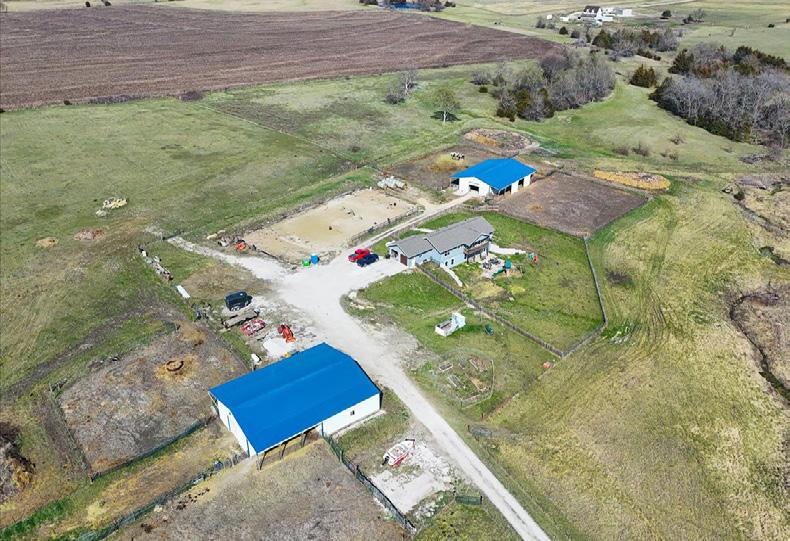

Price reduced by motivated sellers! Great homestead on 42+ acres with home, barn and outbuilding all built in 2018! Over 3100 sq feet with 5 bedrooms, 4.5 bath. Two master suites great for large families or multi-generational families. First master suite on main level with two more bedrooms and a bathroom on the other side of the main floor. Main floor also features an open kitchen with huge island, dining area, living room and mud room with laundry. Beautiful cabinets throughout the kitchen and side buffet. Nice walk in pantry. Lower level is a walk out and features a second master suite w master bathroom including a jetted tub, 5th bedroom, 4th bathroom, family room w fireplace and a large bar/mini kitchen. Barn 1 is set up as foaling barn w cameras hard wired to house and situated 60’ from house for convenient access.
Wait!!! Don’t scroll past this one without checking out this unique property!! From the outside this farmhouse looks huge, and it is! The original 1888 farmhouse has been remodeled and updated over the years providing approximately 1300 Sq ft of living space but a 2000 sq ft permitted addition was added in 1998. Life plans put finishing the interior on the back burner, again and again and again. With 2x6 exterior framing, the addition is just waiting to be finished. The main floor is framed out for a mud room, kitchen, half bath, HVAC room and a large primary suite with full bath & closet. The second floor is currently being update w 2 conforming bedrooms and a plumbed bathroom with sitll more space to finish to meet your needs. Basic estimates to finish come in at approximately $40 sq ft to add another 2000 sq ft!


